The island of Manabeshima (真鍋島), in Okayama Prefecture (岡山県), is a place in Japan that I have dreamed of visiting for many years. This “island of cats,” whilst remaining relatively unknown, certainly doesn’t lack attractions. Situated in Japan’s inland sea, it is renowned for its relaxed way of life and the beauty of its landscape. The island’s two fishing villages are picturesque, and the beach is clean and well-maintained.
The Setouchi region (瀬戸内地方, Setouchi-Chihô) is made up of hundreds of islands, with the most famous being the “artistic islands” of Naoshima (直島) and Teshima (豊島). Manabeshima, however, owes some of its fame to the illustrated travel tales by Florent Chavouet: Manabeshima Island Japan (published in French by Picquier in 2010 and in English by Tuttle in 2015). The author stayed there in summer 2009, and the story of his experience has inspired many travellers to discover the island of Manabé.
- In the footsteps of Manabé Shima by Florent Chavouet
- The cats of Manabeshima
- What to do in Manabeshima
- The fishing villages of Hon-ura and Iwatsubo
- Traditional events
- Summer activities
- Unplanned encounter with a local resident
- Practical guide
- Accommodation
- Restaurants and where to eat
- Access and practical information
In the Footsteps of Manabé Shima by Florent Chavouet
In July 2020, I found myself on a little boat that takes passengers between Kasaoka (笠岡諸島, Kasaoka Shotô) and the surrounding islands when I recognised the koban (police box), featured in Florent Chavouet’s book, and it struck me that I was on Manabeshima.
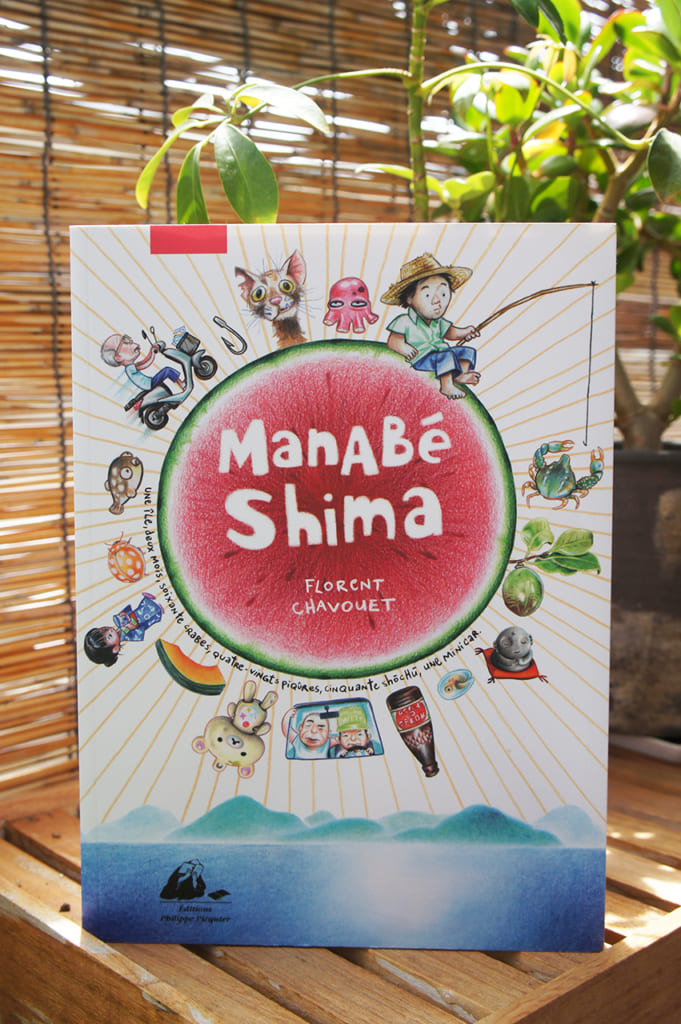
It’s not unusual to visit a place that we are already familiar with from photos that we’ve seen. But for me, it was the first time that I recognised a place solely from illustrations, and I must say that I found it a delightful experience. It surprised me that some of the buildings were so familiar, and I recognised many of the characters in the people that I met. But it was the detail that I enjoyed discovering the most; an insect brought to life in the book, for example.
Through the delicate tone of the book, the reader can learn so much about the island of Manabé Shima; whether it’s the history, the remarkable buildings, daily life, culture or the fauna and flora… visiting the island after reading the book is like having Florent Chavouet as your personal guide.
Manabeshima: Cat Island
About a dozen islands in Japan have gained the title “island of cats”, such as Ainoshima in Fukuoka, Fukashima in Oita, and, of course, Manabeshima. Here, cats please themselves and certainly benefit from the few cars and an abundant supply of fresh fish.
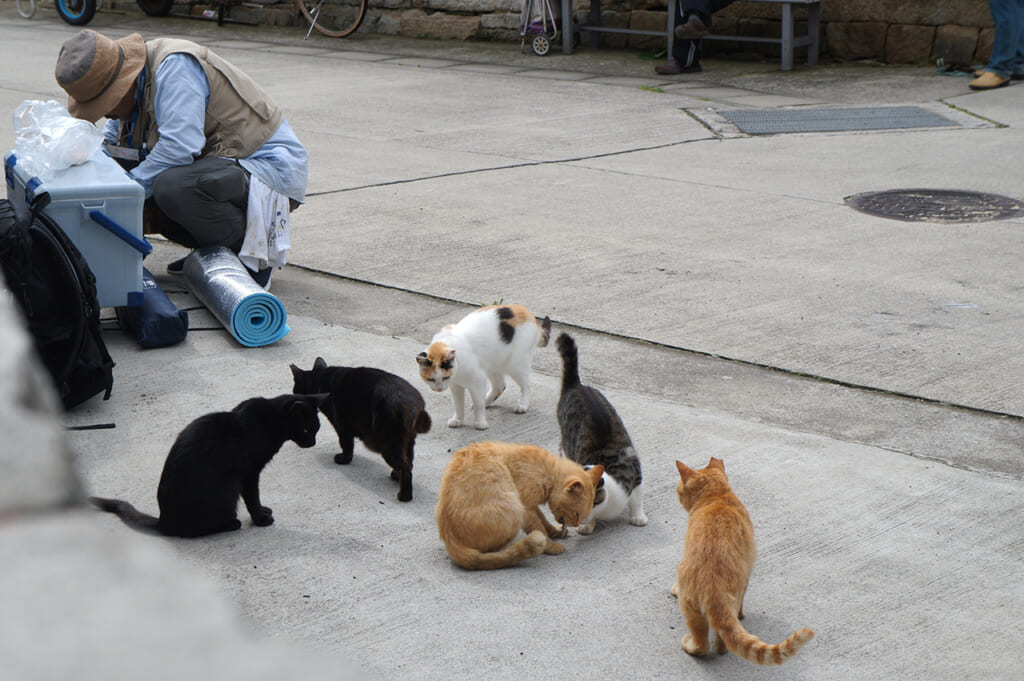
Accustomed to the wild cats of Kyoto (京都), the first few cats that I met were really charming. I had hardly called out to them before they were heading in my direction for a stroke.
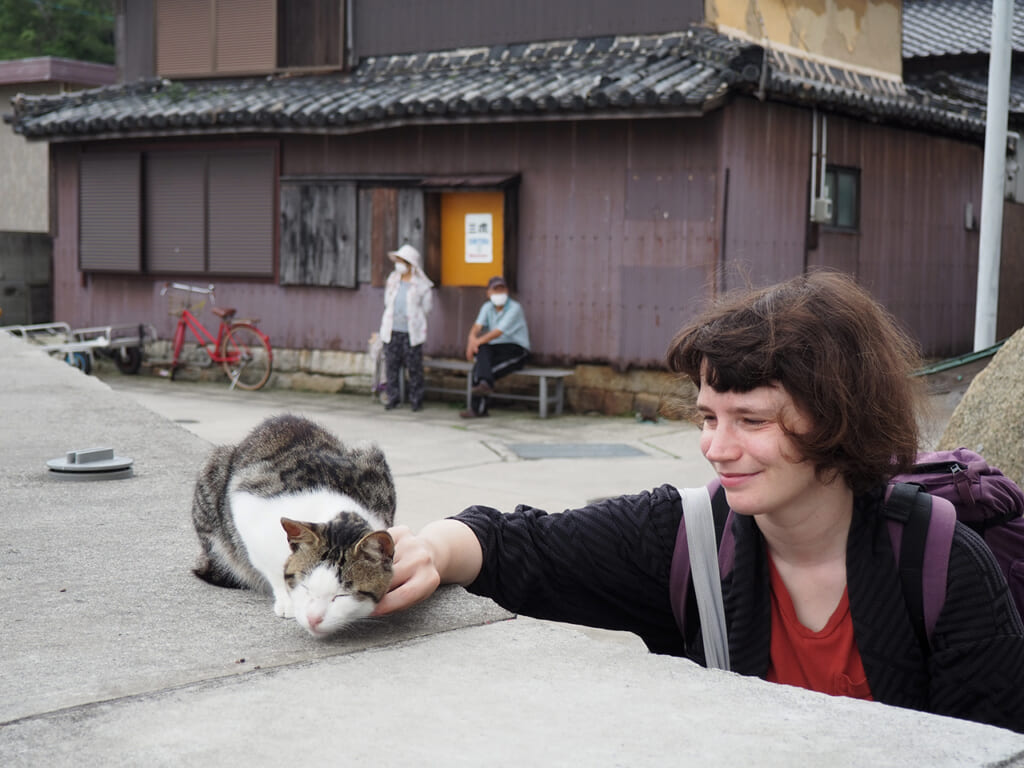
We met cats wherever we went on the island, but they mainly congregated around the port area. They weren’t all as affectionate; some were oblivious to the presence of humans while others watched from afar, curious and afraid. As we made our way through the streets, many of them would run off as soon as we got too close.
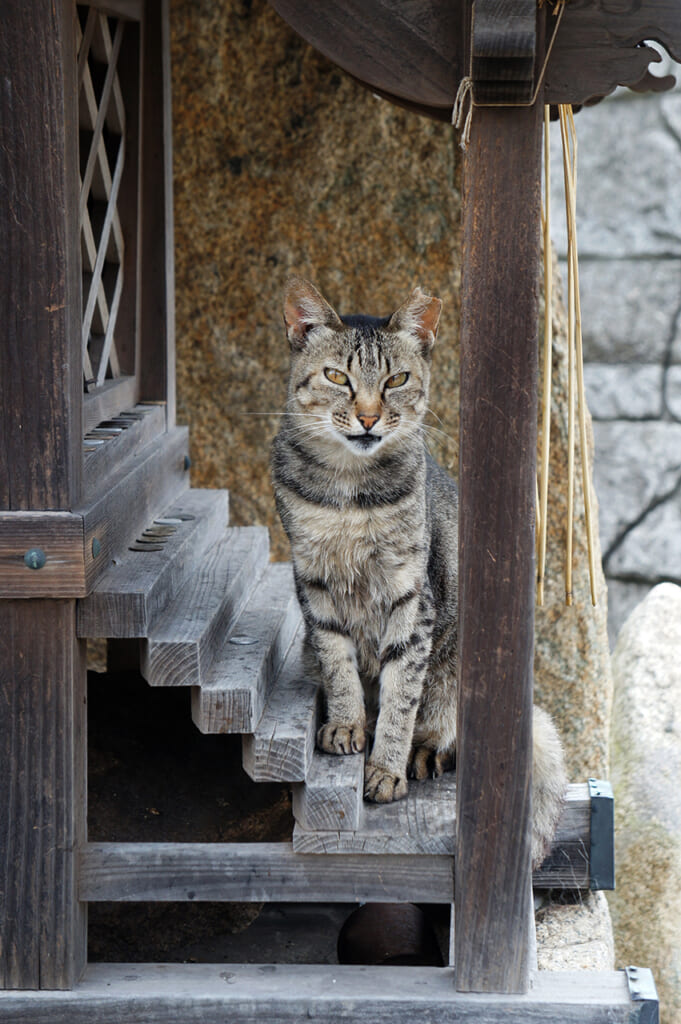
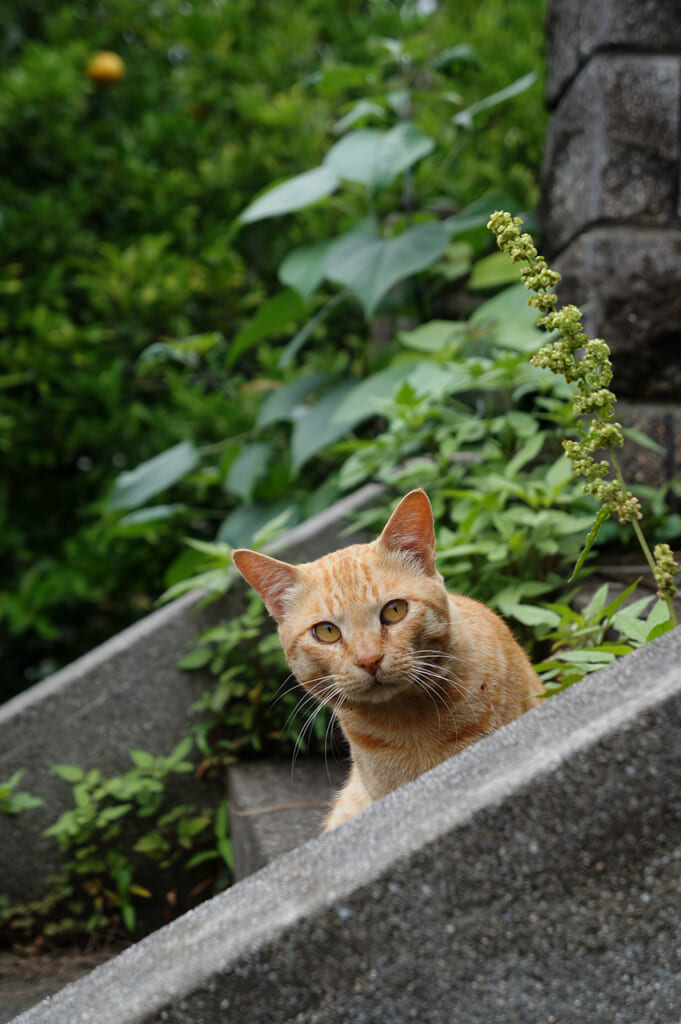
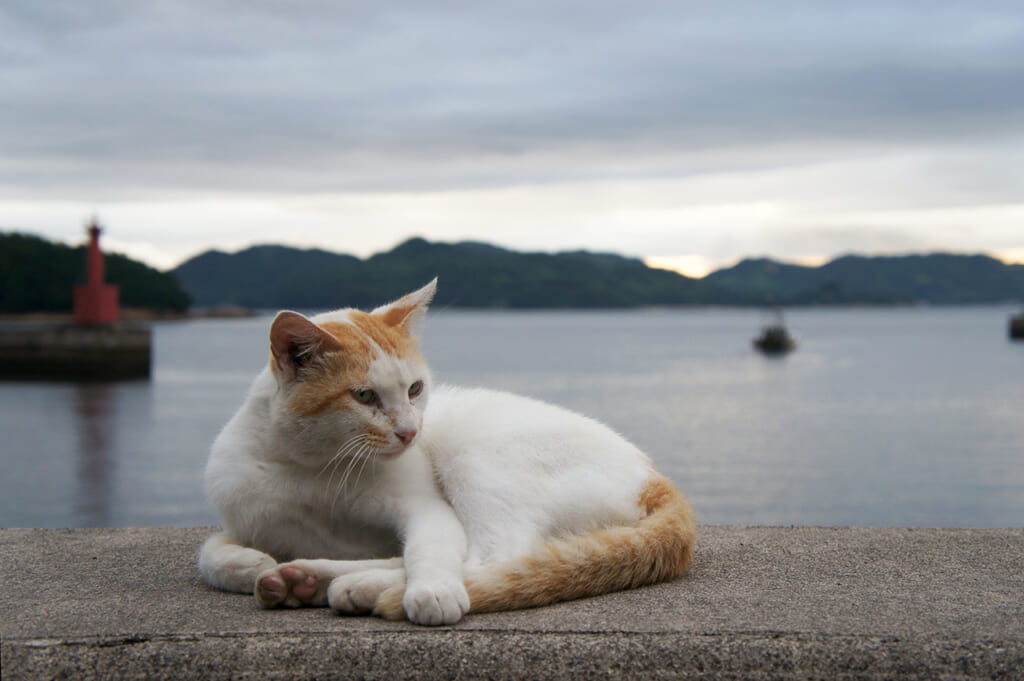
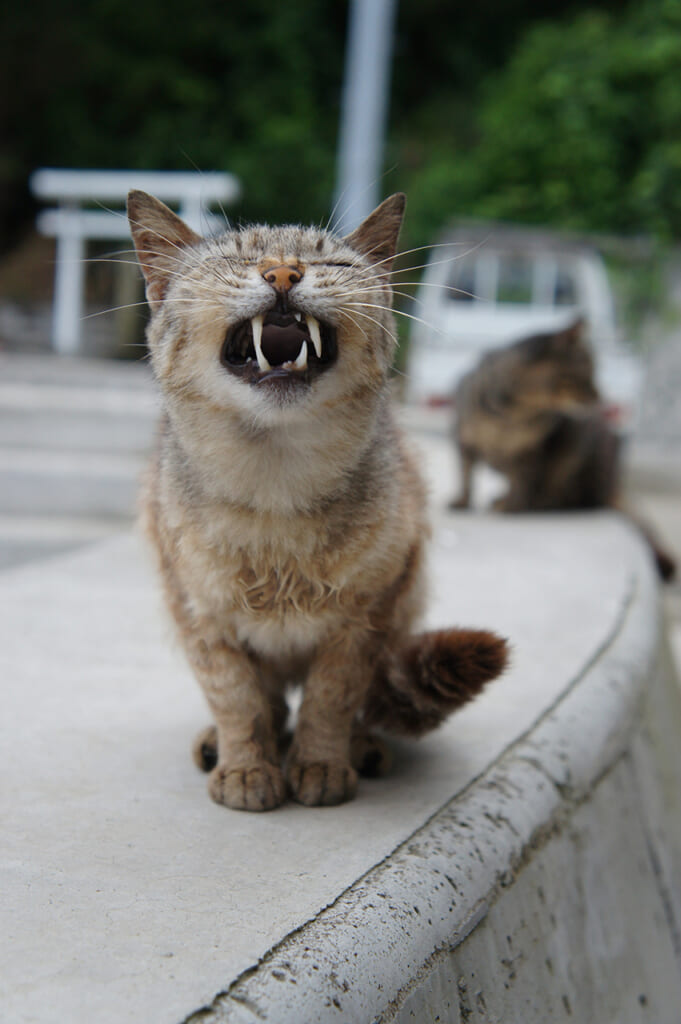
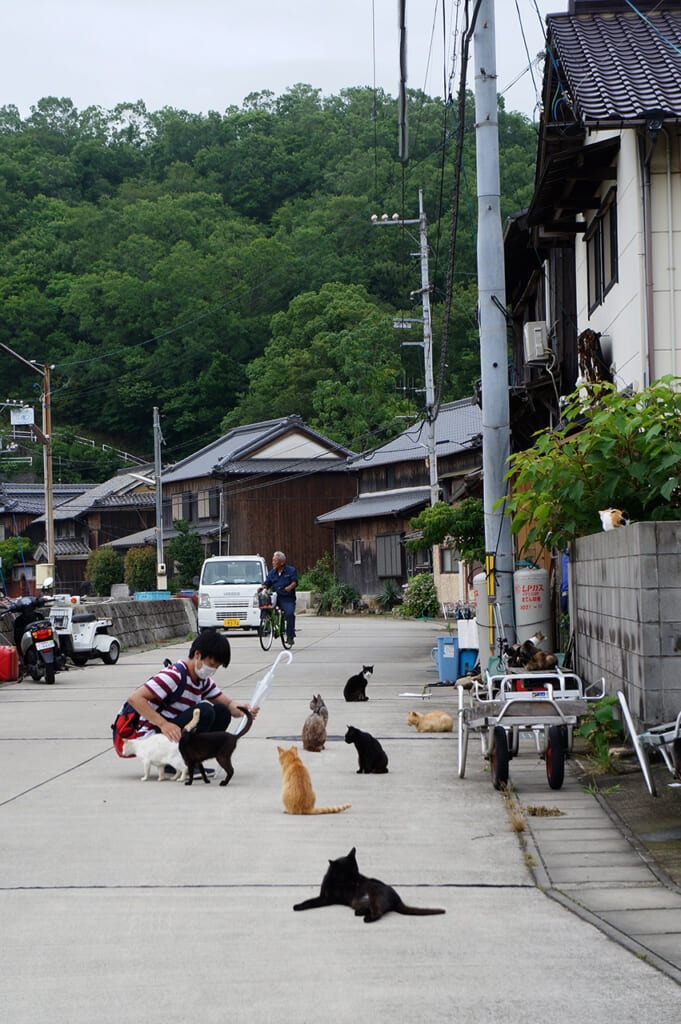
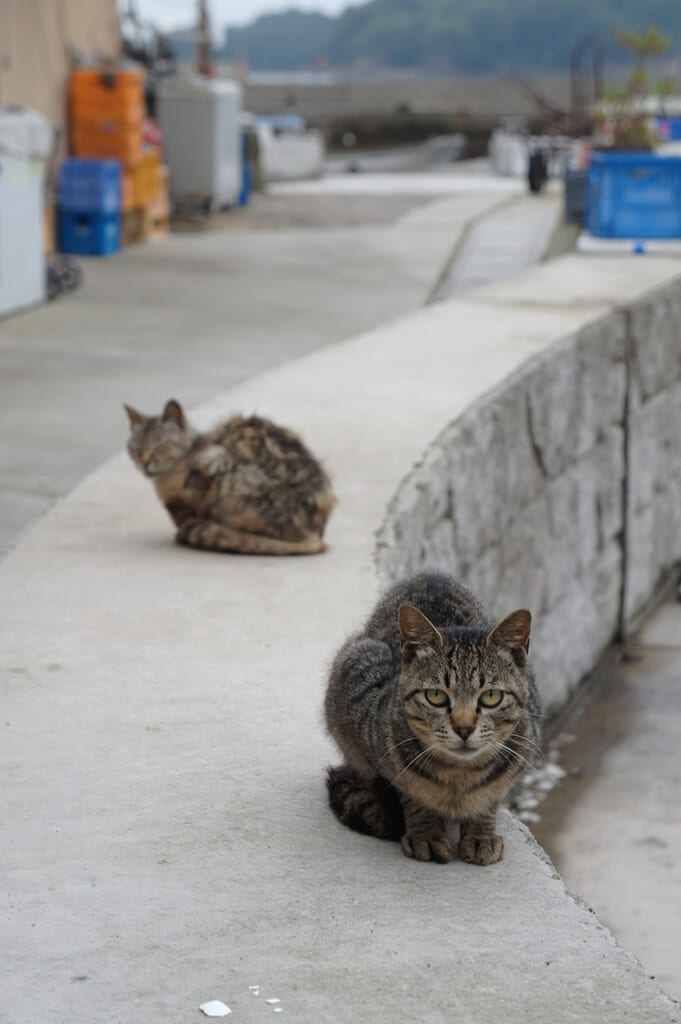
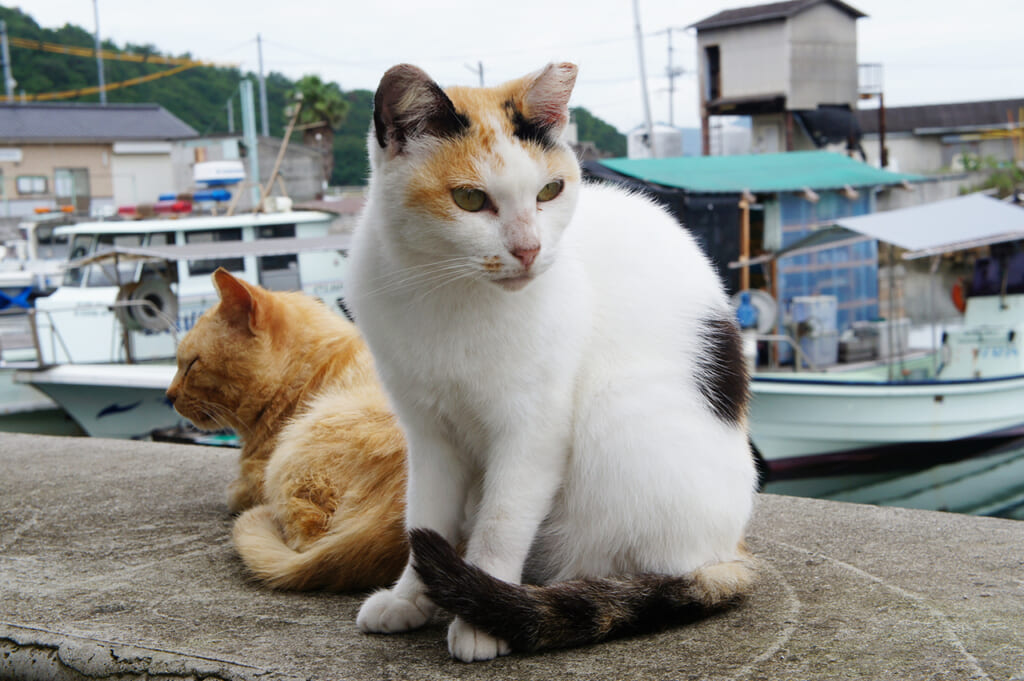
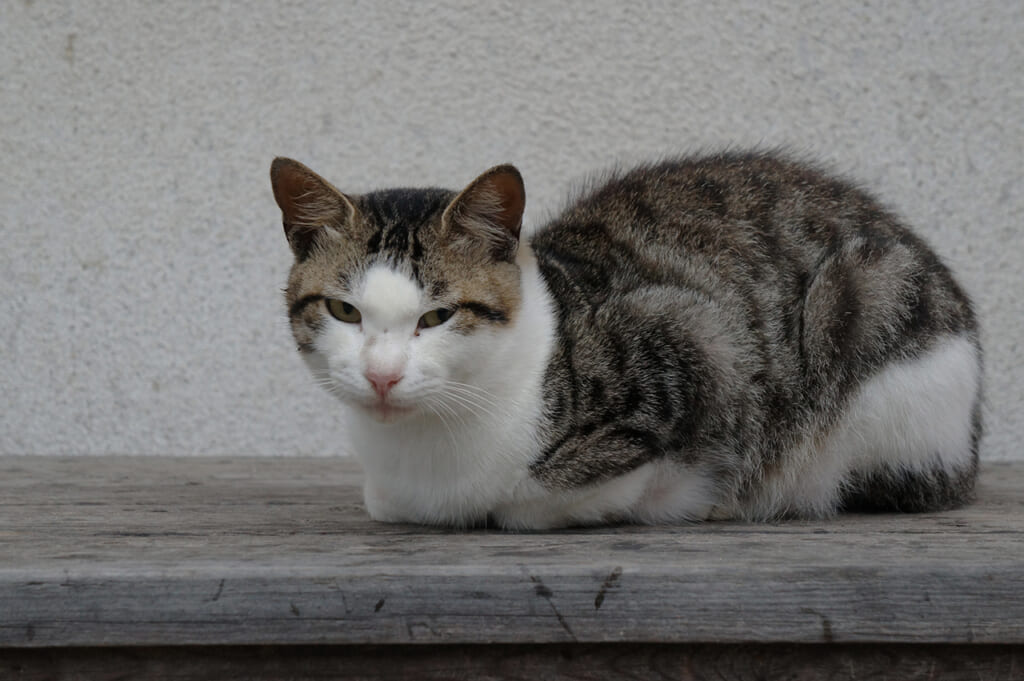
While some are timid, they are far from being house cats, and it’s clear to see the effects of life on the street. Therefore, you should approach them softly, allow them to sniff your hand before touching them and certainly don’t stroke them aggressively or try to pick them up.
For those who love islands, the Seto Inland Sea and animals, I would recommend a visit to Okunoshima Rabbit Island, which I have also been fortunate enough to visit on a previous trip.
What To Do and See on Manabeshima Cat Island
Manabeshima is much more than an island of cats and there is so much to discover throughout its 1.48 km2 that a single day is not enough.
Picturesque Walk Around The Two Fishing Villages
Even though the island is small, it has two villages: Hon-ura (本浦) and Iwatsubo (岩坪). These two fishing villages are characterised by narrow, winding streets and old buildings, as is often the case in Japan.
What makes the streets of Manabeshima so photogenic are the numerous abandoned buildings. In the 1970s, there were more than 1,000 inhabitants on the island, compared to about 200 today, making the island a popular spot for Haikyo amateur photographers (廃墟 ‘Haikyo’ is the Japanese version of Urbex where people often explore derelict spaces).
Hon-ura: The Heart of the Island
Hon-ura is the biggest of the two villages on Manabeshima, and it’s where you will find the port and the primary school, college and the majority of businesses and public services.
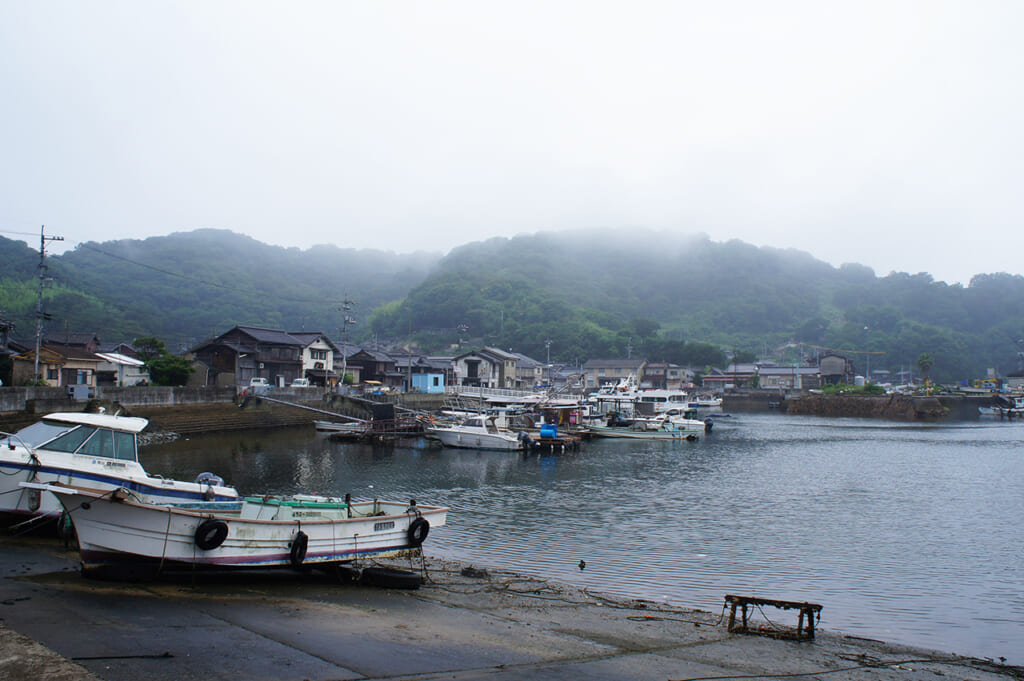
The port is where you can watch the inhabitants, both feline and human, going about their business. Island life is timed by the ferry schedule, with the first one departing at 8:09 am and the last at 5:28 pm and making a total of 8 round trips each day. The road, which passes in front of the wharf, is where island life plays out and is very much ‘the place to be’ on the island.
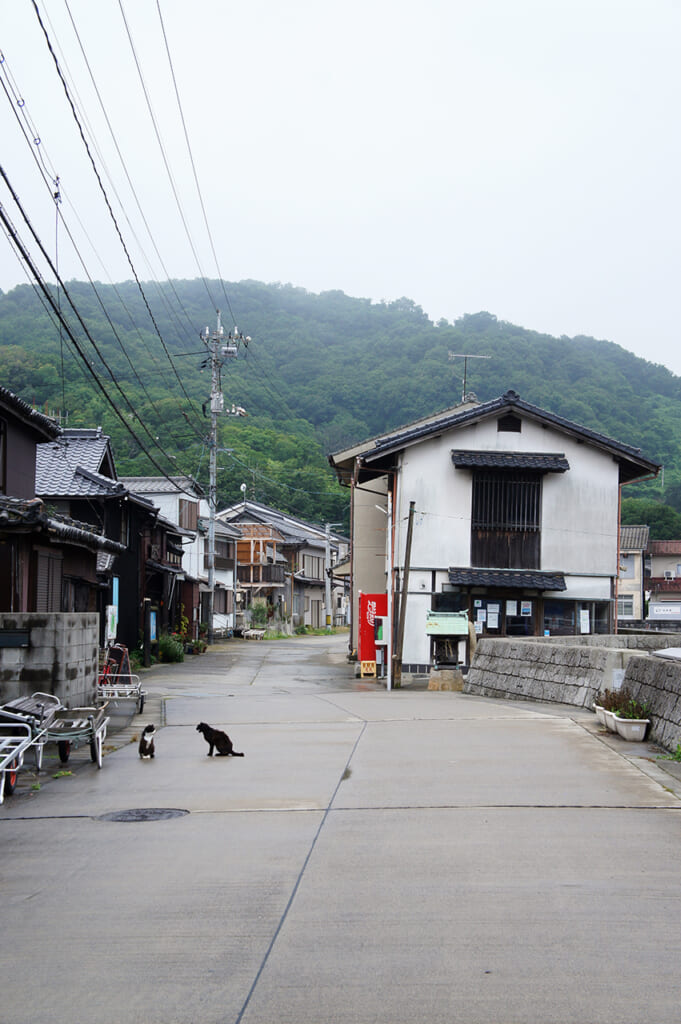
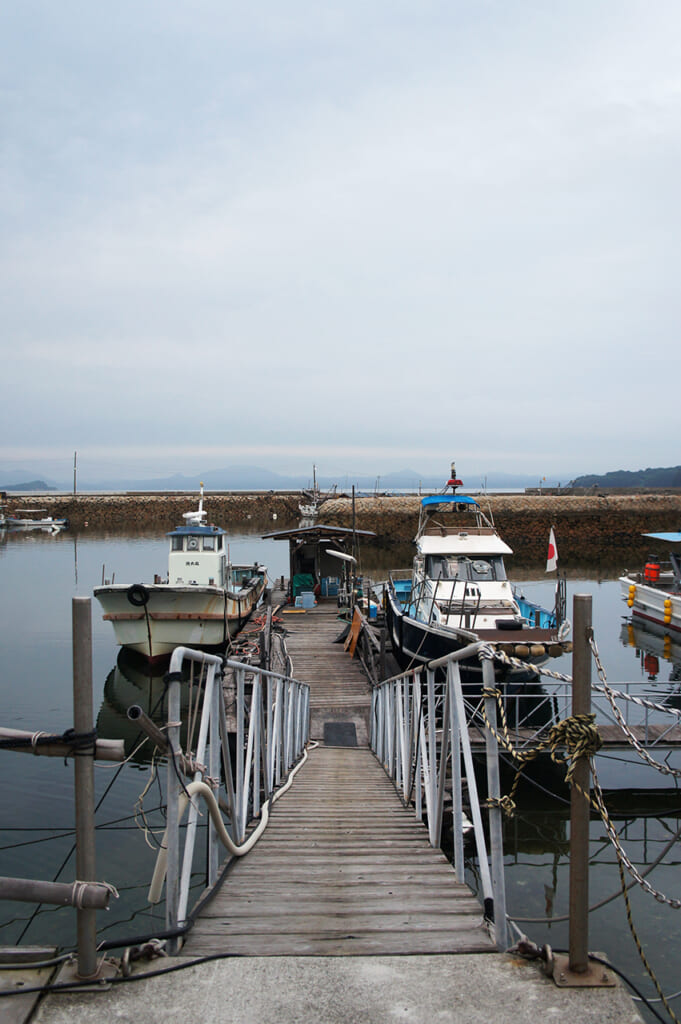
Venturing into the streets towards the centre of the island, you quickly find yourself in a narrow, winding maze lined with houses — often abandoned — and complete with vegetable patches. Here, each inhabitant grows their own vegetables, and you begin to understand that only the bare essentials exist on the island. But the inhabitants certainly benefit from fertile soil and an ocean that’s rich in fish.
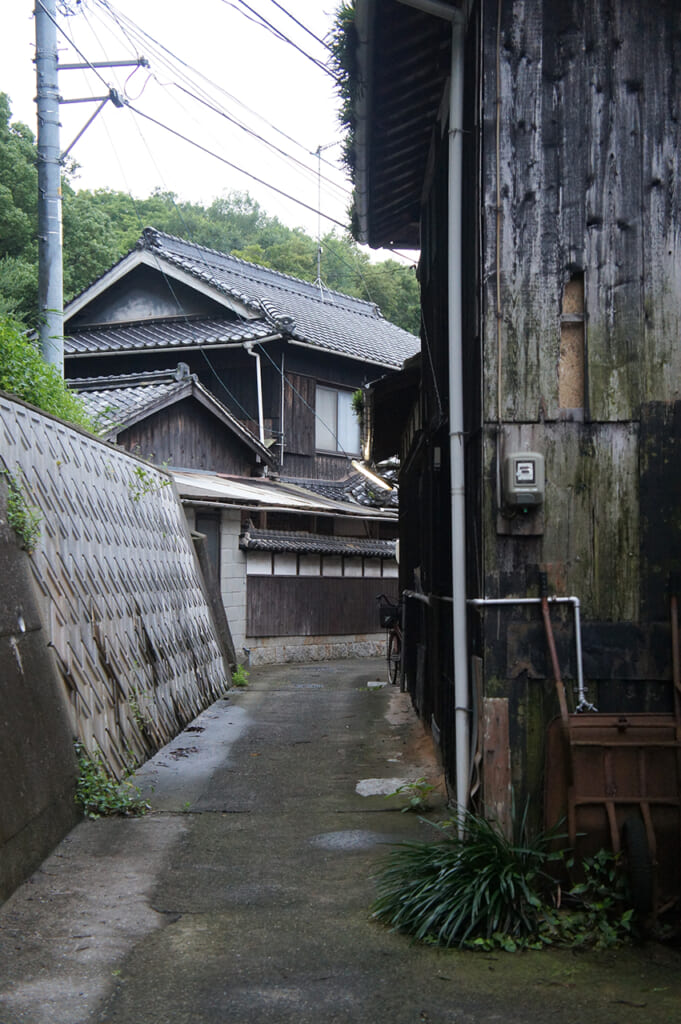
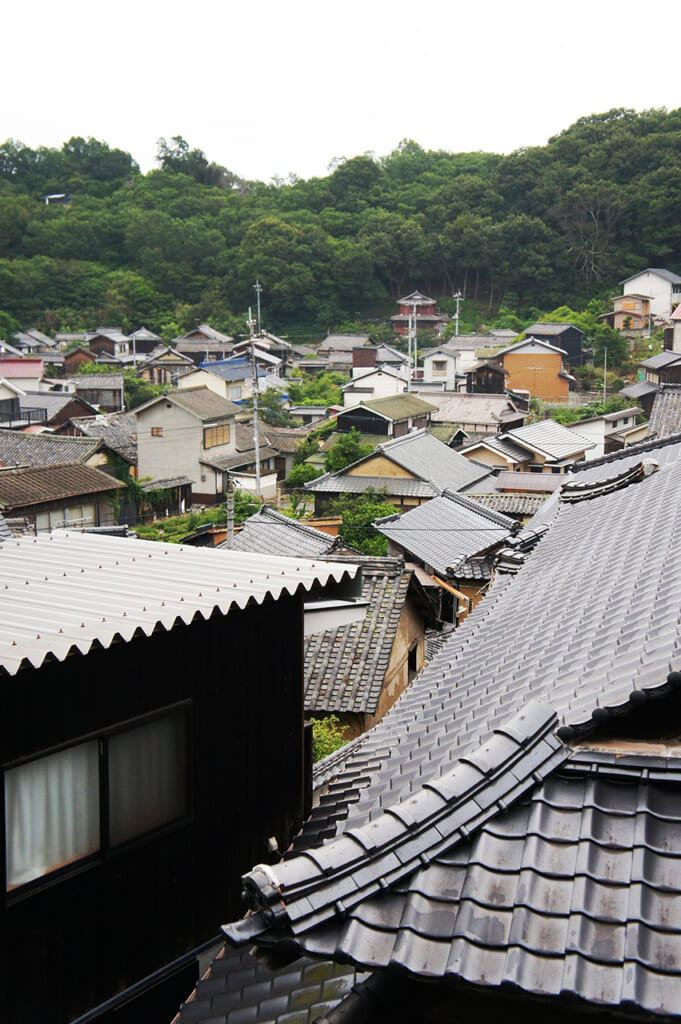
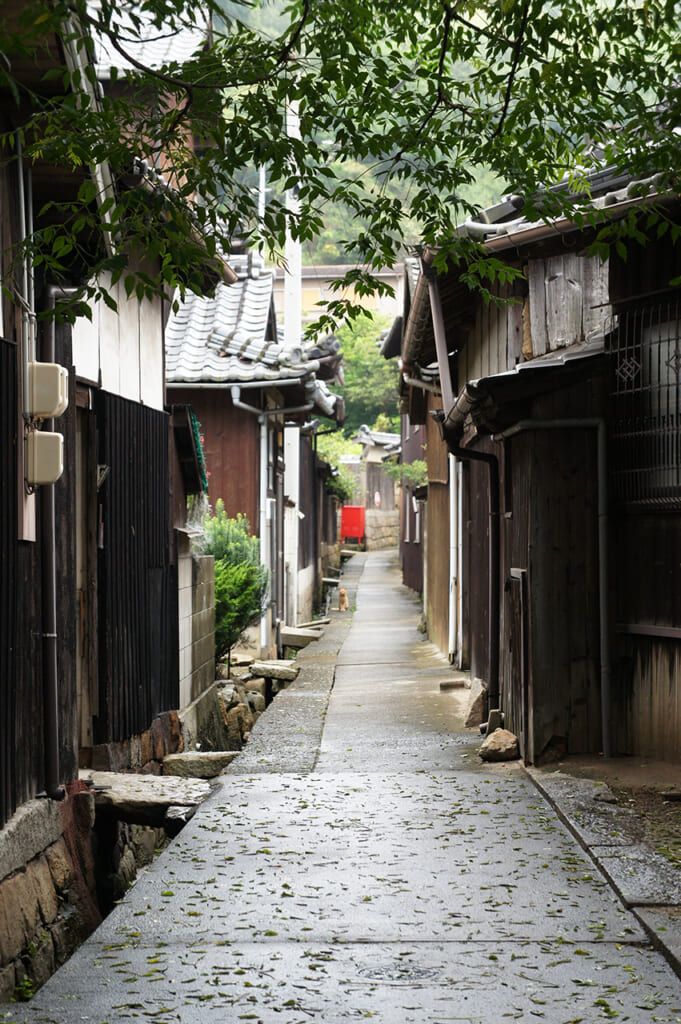
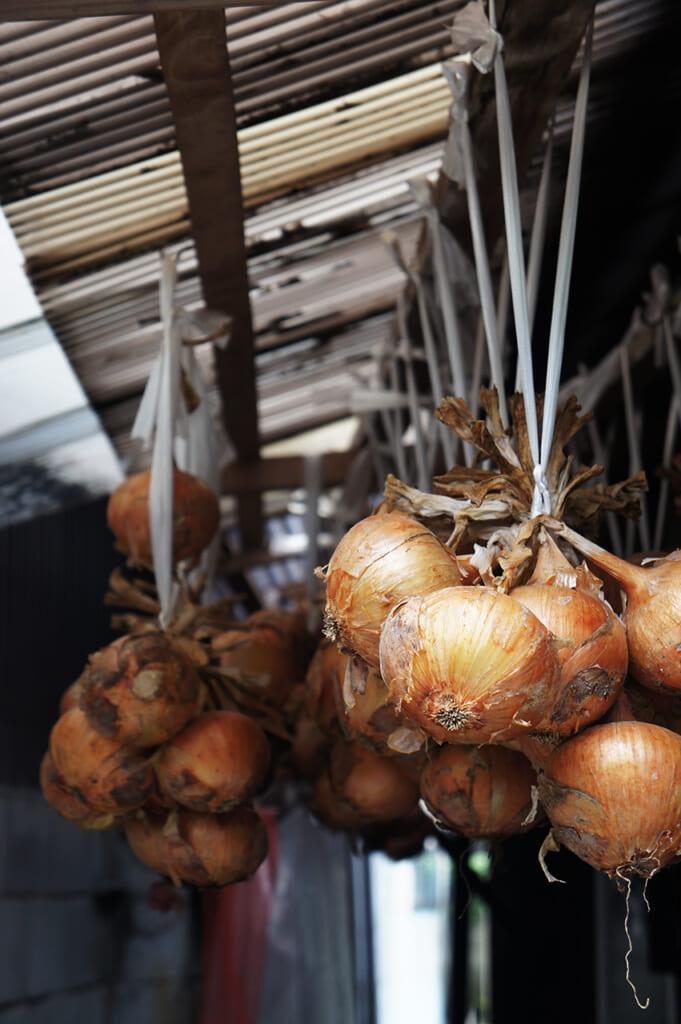

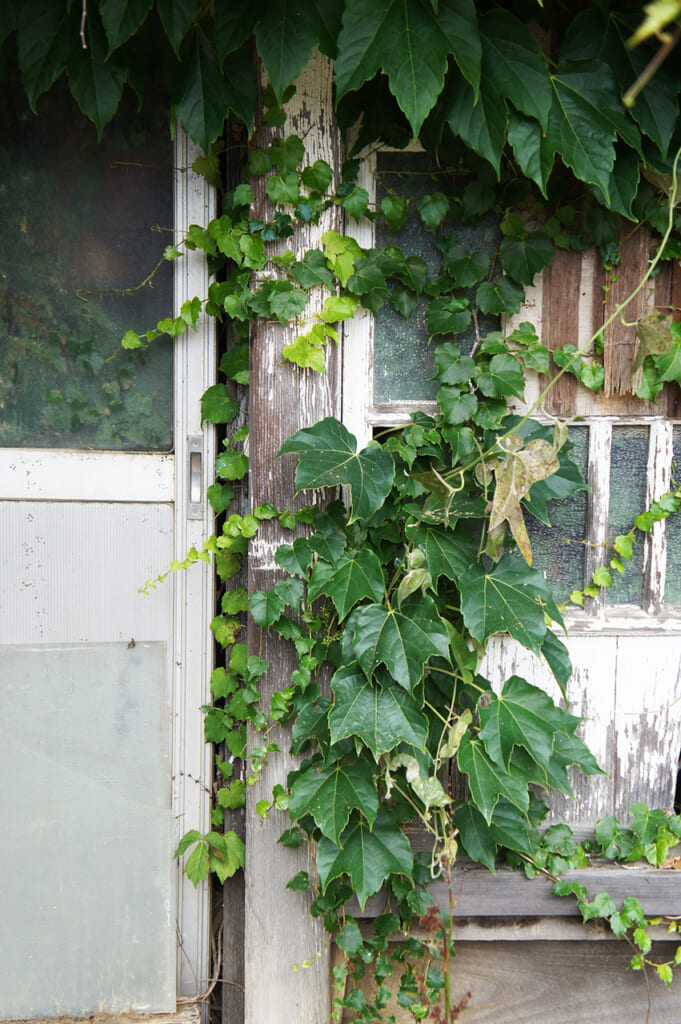
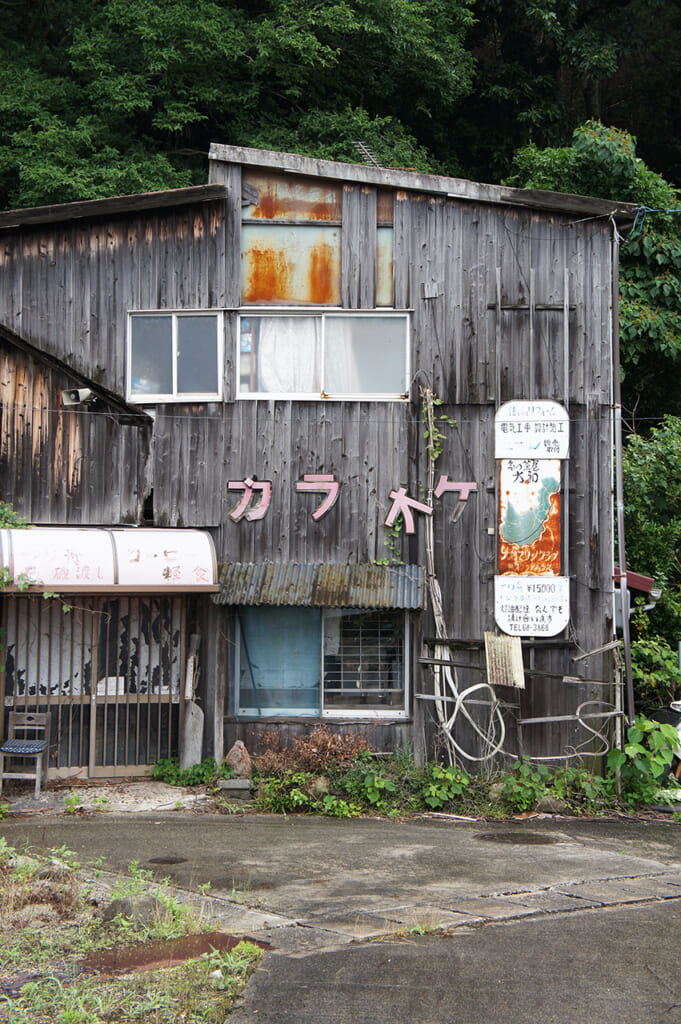
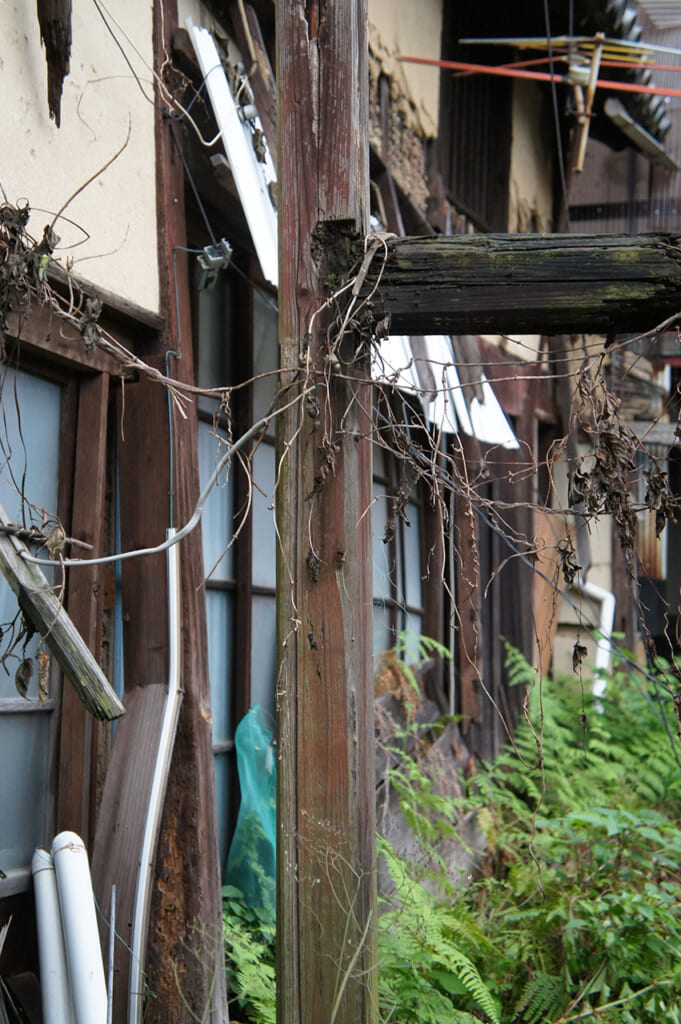
If you don’t mind the walk, it would be a shame to miss Manabeshima College (笠岡市立真鍋中学校, Kasaoka Shiritsu Manabe Chugakko). This wooden building, built in 1947, is representative of Japanese school architecture from that era, with a large corridor lined with windows on one side and classrooms on the other (many modern buildings still adopt this type of layout). The atmosphere is wonderfully nostalgic, and part of me envied the school children who studied here, with a view of the ocean and small crabs, part and parcel of island life, to watch during their recess.
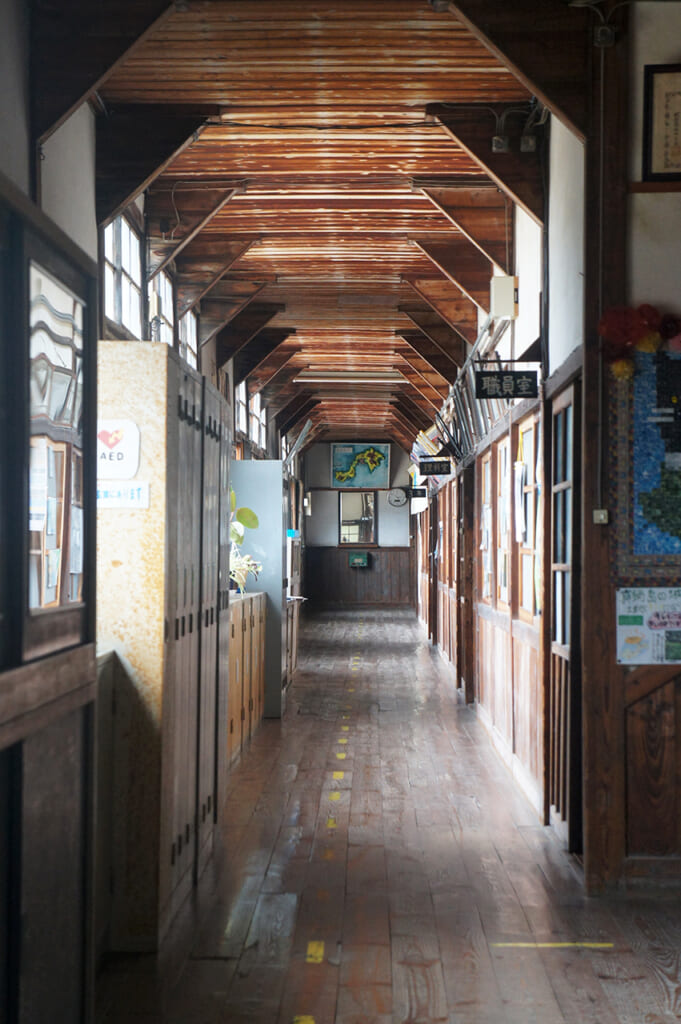
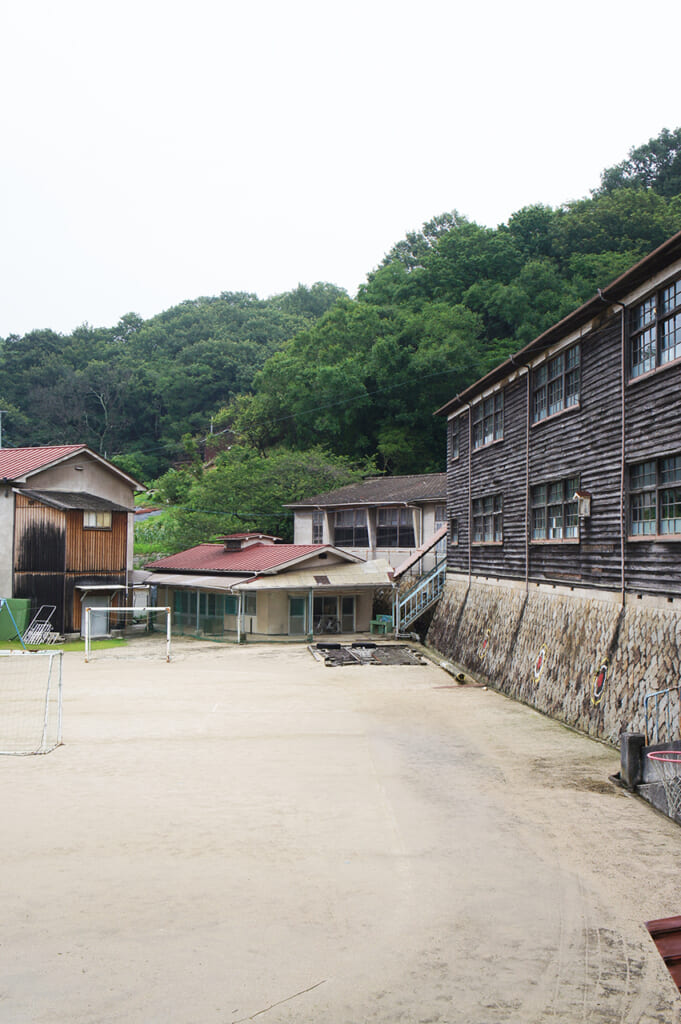
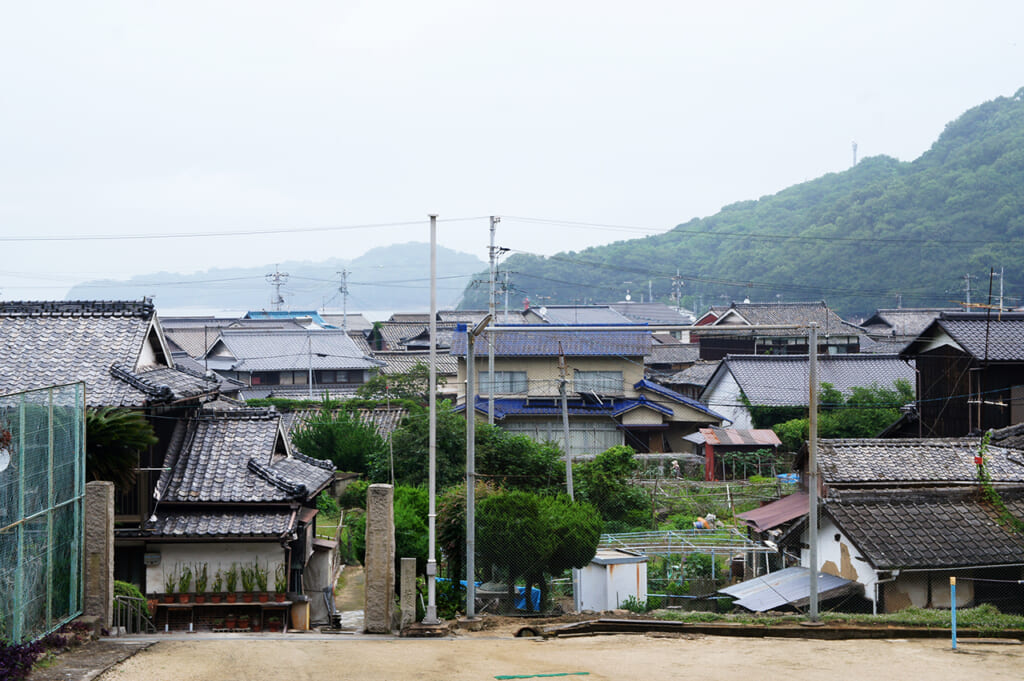
The other notable building in Hon-ura is Enpukuji Buddhist temple (円福寺), founded in 795 by the monk Kobo Daishi. It is situated overlooking the fishing village, offering an impressive view of the surrounding roofs. Even though its size may seem relatively modest, after exploring the narrow streets of the villages, the temple walls take your breath away.
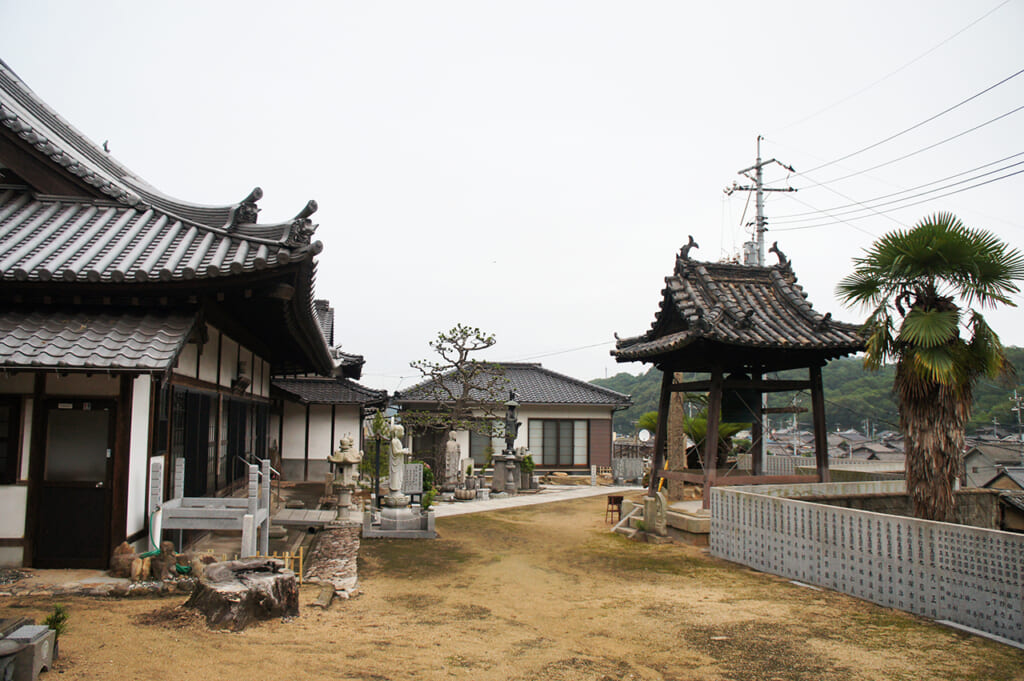
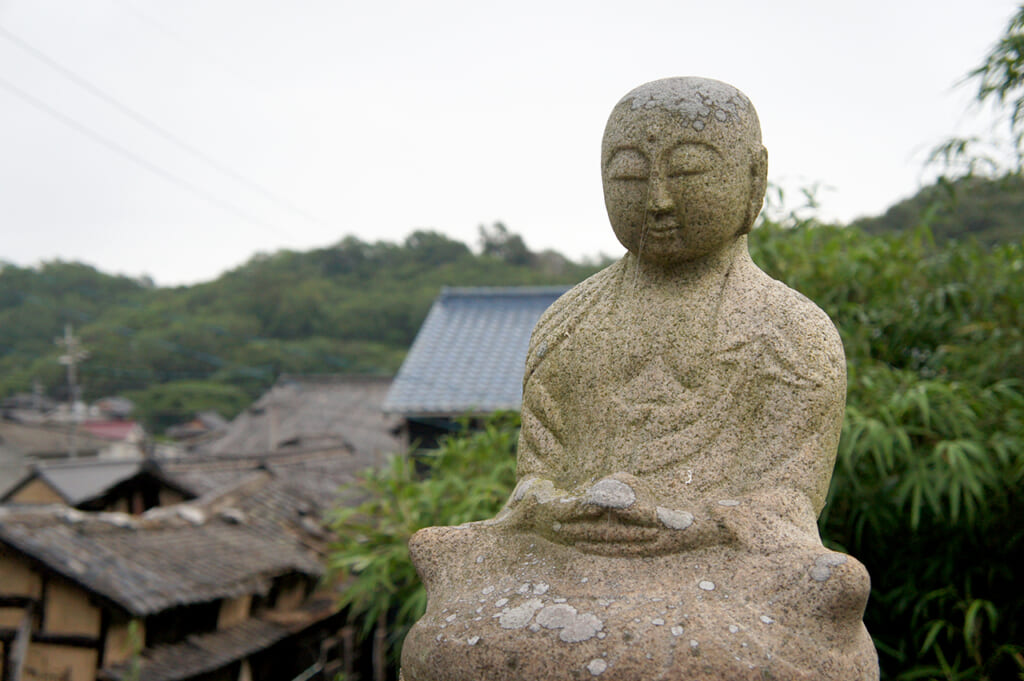
Iwatsubo: From the Port to the Steep Streets
Situated about 10 minutes walk from Hon-ura via the only road on the island, Iwatsubo has a charm of its own, particularly because it’s built into the side of a hill. Its streets are not only narrow but also steep, which makes them all the more photogenic.
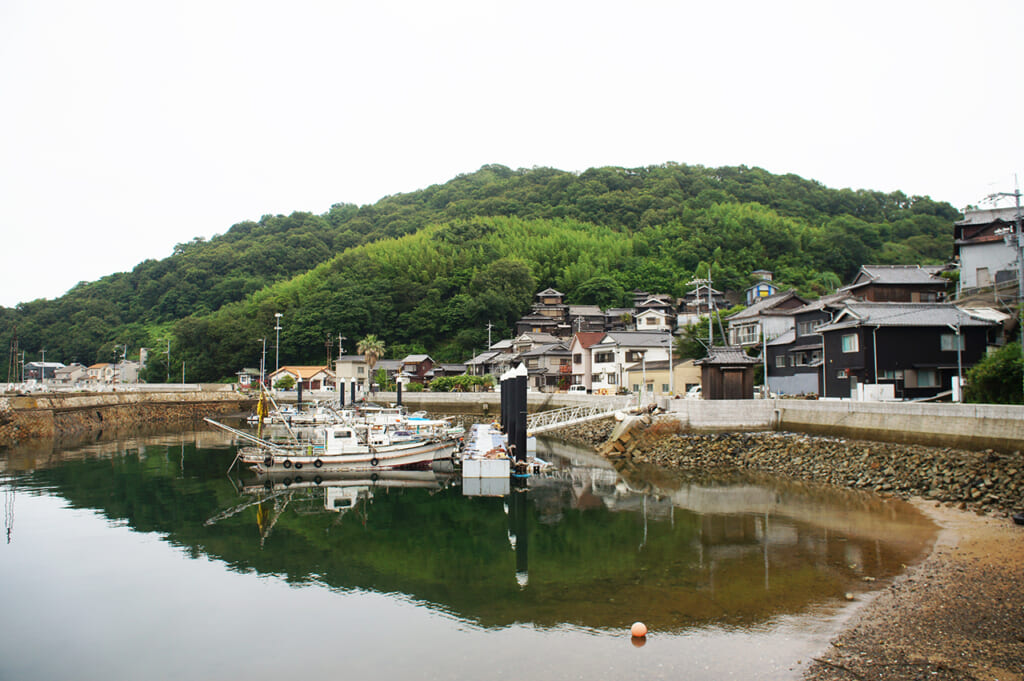
Certain slopes are so straight that climbing them requires considerable effort and a large amount of care on the steep journey down, especially in the heat of summer. Despite numerous handrails installed, I asked myself how elderly residents on the island get by without too much difficulty. There are two responses to that question.
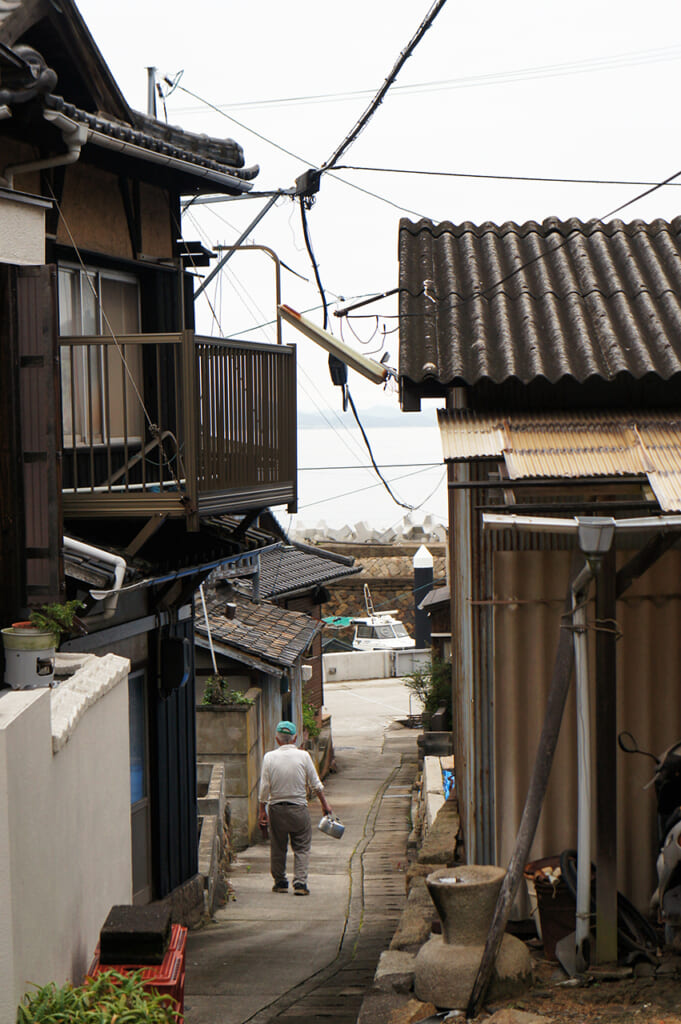
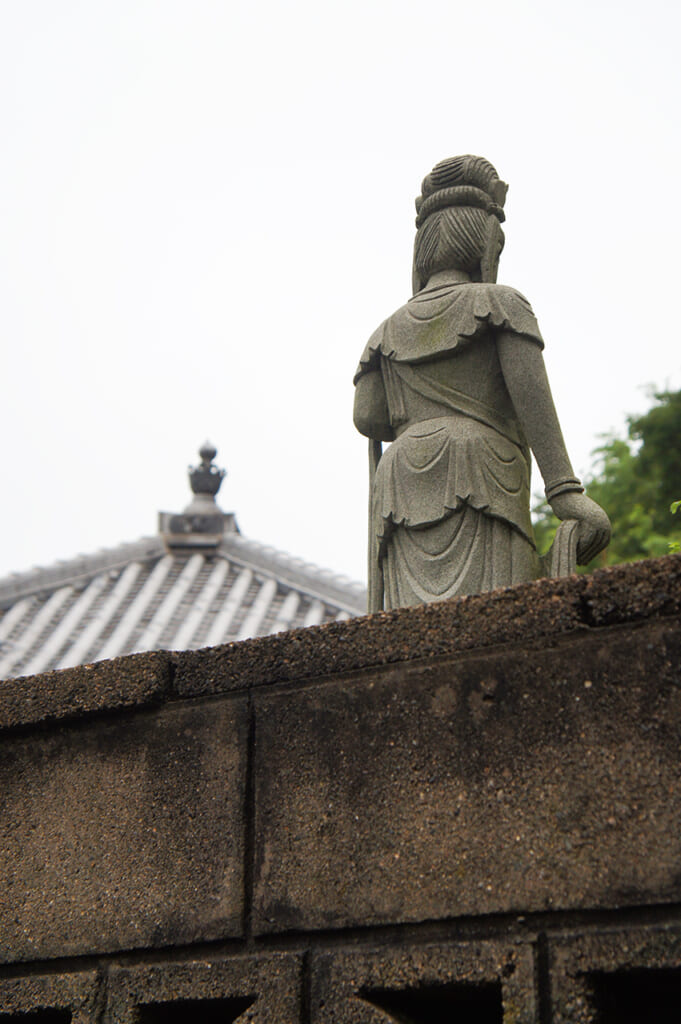
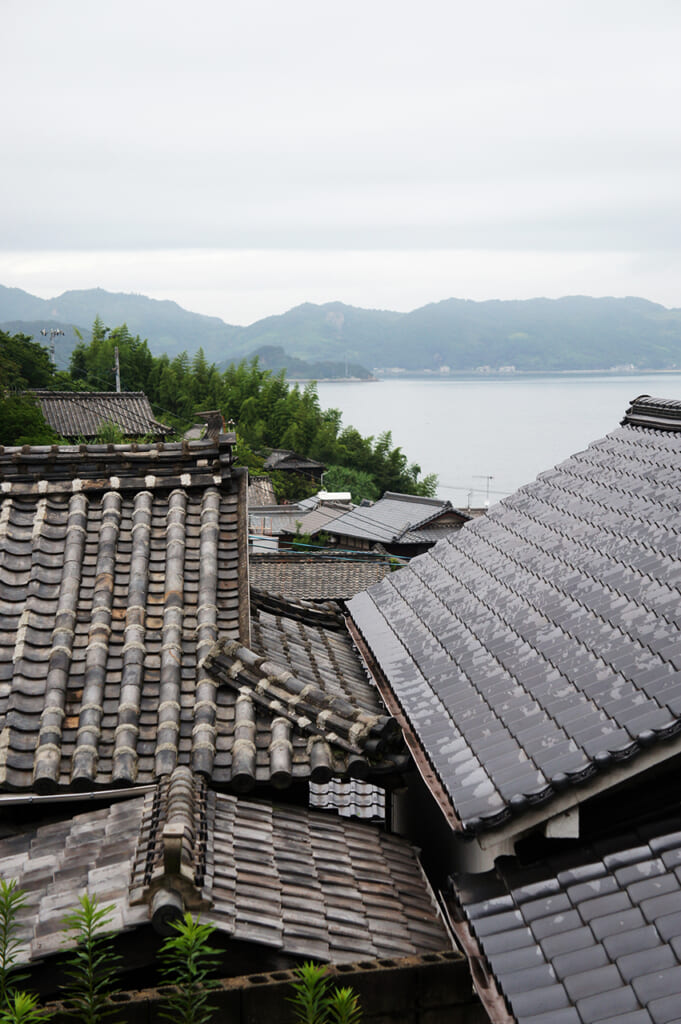
Firstly, the routine of keeping active daily constitutes towards maintaining a surprisingly good body. But the second thing only became apparent at the base of the street when it passed by me at relatively high speed. It was a powerful mini car for just one person, which ferried people through the allies. The older woman who rode it would effectively be able to return home without too much trouble! I don’t have any official statistics, but it’s probably the most widely-used vehicle on Manabeshima and invaluable in helping the elderly to maintain their independence.
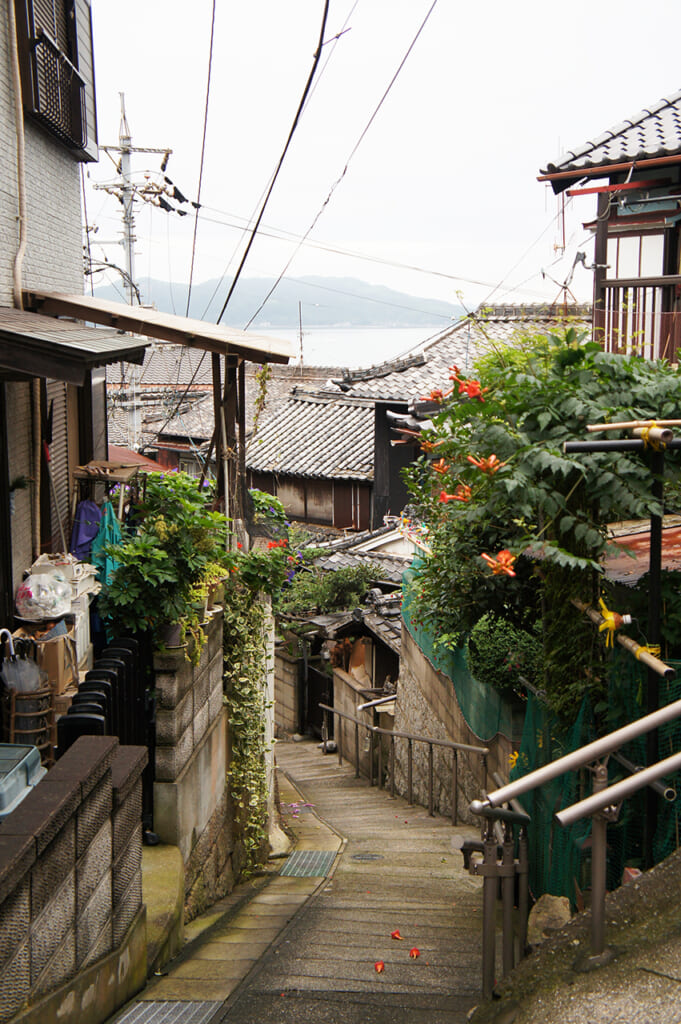
Just as Hon-ura has its Buddhist temple, Iwatsubo has Hachiman-jinja (八幡神社) Shinto sanctuary, which is also situated high up, but unlike the unobstructed view of the Hon-ura Buddhist temple, the sanctuary is surrounded by trees. There are two entrances, both situated a few metres apart, along the main road. Each entrance is formed by a long walkway of steps covered by torii gates and stone lanterns.
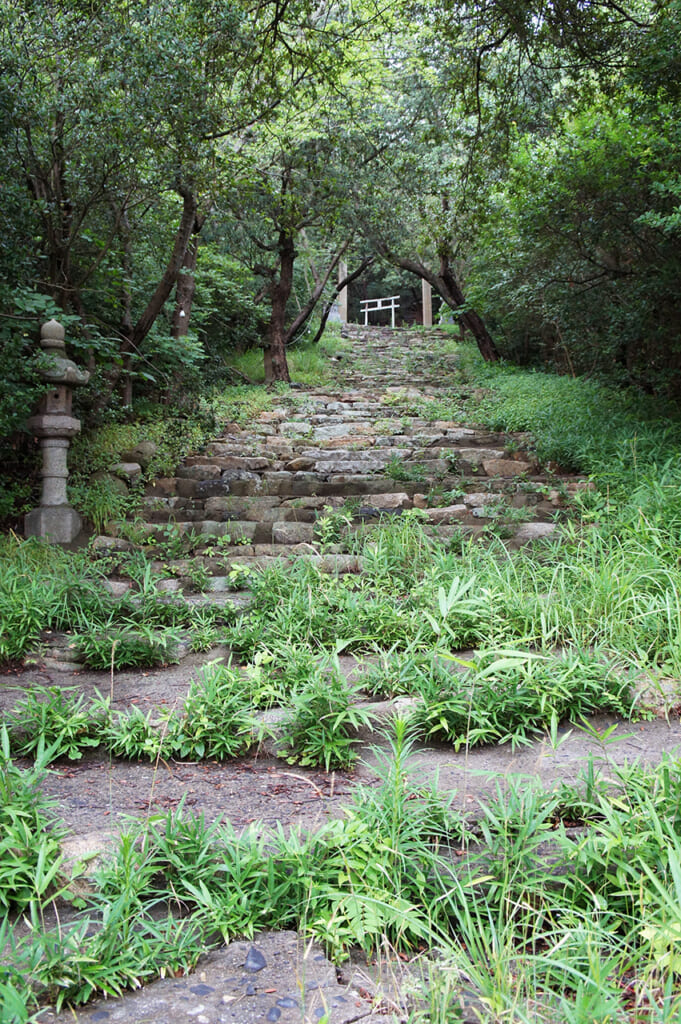
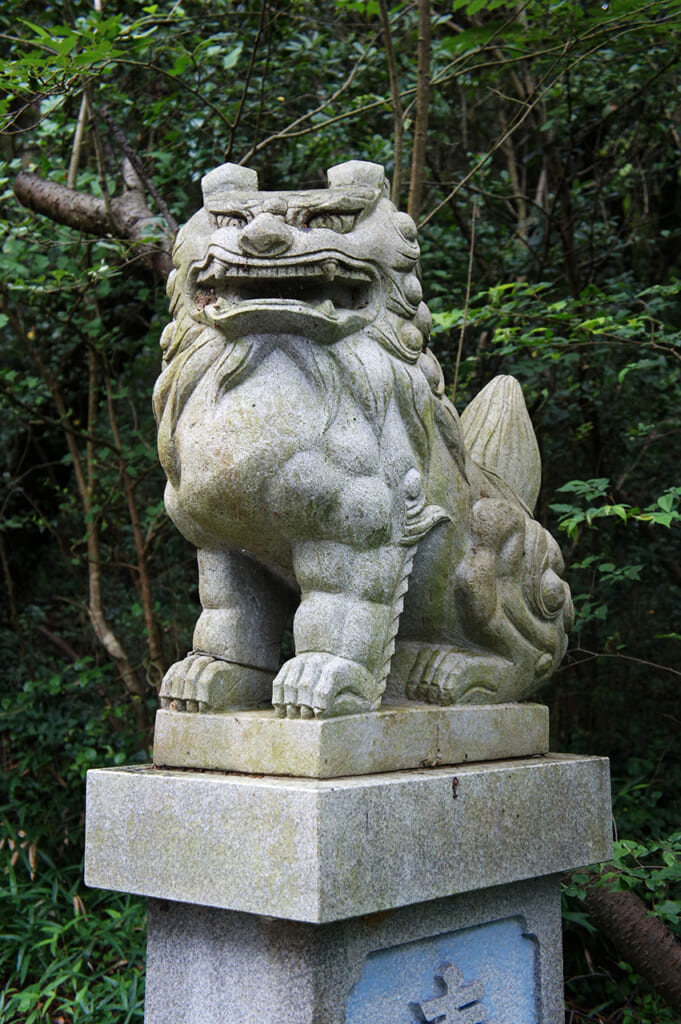
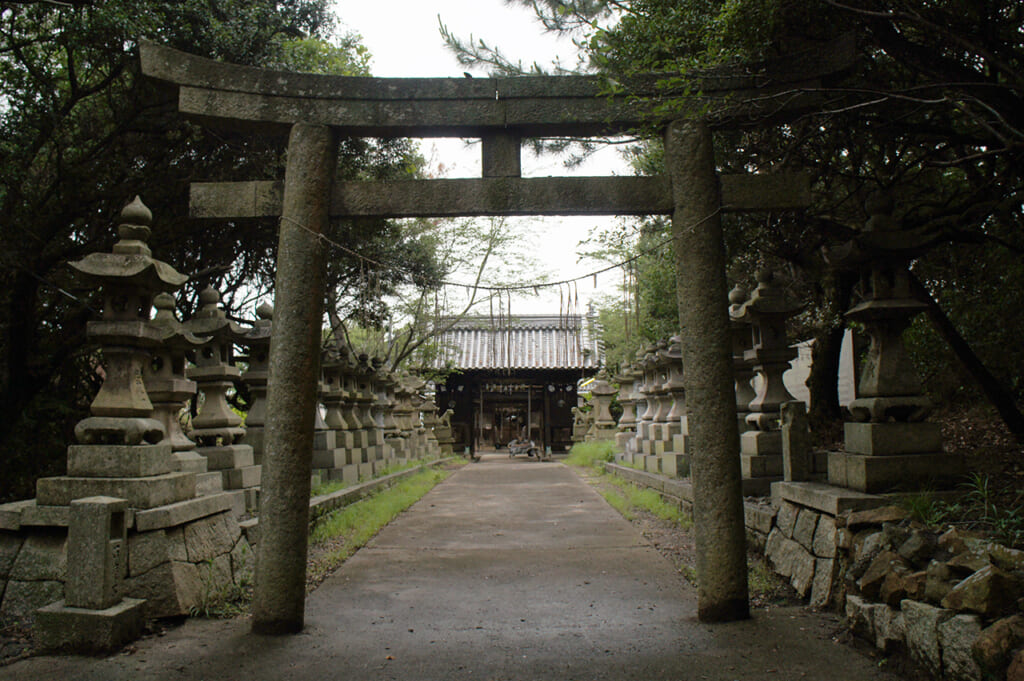
Climbing the uneven steps, where vegetation seems to have taken over in some places, feels so adventurous as you watch for snakes and giant insects on the way. It took me back to my childhood when I used to imagine myself as a young explorer who discovered a secret sanctuary deep within a treacherous forest. In reality, it takes just a few minutes to reach the buildings, and the village is close by, but this sanctuary certainly has powerful energy around it. When I finally rejoined the road, I was disorientated and felt as though I had been dreaming of a parallel universe.
Traditional Japanese Events which give Rythme to Life in Manabeshima
Local life on the island is centred around a range of traditional and religious events. The main ones are the Hashiri Mikoshi (走り神輿) festival in May and the Kagura (神楽) rituals in July.
The Hashiri Mikoshi Festival
The busiest event of the year in Manabeshima takes places during “Golden Week” at the start of May in the Hachiman sanctuary. The Hashiri Mikoshi (走り神輿) is a Shinto festival where three portable shrines are paraded around the island.
The festival also features lion dances and ritualised fighting. One of the mikoshi (神輿 portable shrines) is even transported on a decorated fishing boat.
Kojin Kagura: Ritual Dance
Another event that’s firmly rooted in Shinto culture takes place each July on Manabeshima. A dance troop performs representations of the Kagura, ritual dance, which is said to leave a mythical atmosphere in its wake.
You can find out about upcoming dates on the Kagura Kitayama website (only in Japanese).
Take Advantage of Summer Activities
Our stay on the island was too short, and we certainly wanted to explore more. However, we decided to spend our time in the villages rather than on the beach. On the opposite side of the port, the beach hosts several summer activities, and many people enjoy whizzing between the different islands on jet skis!
If you wish to explore Manabeshima from the beach, the best thing is to book a room at Santora, accessible from the path that crosses the island, water taxi or indeed jet ski.
Practical Guide to Manabeshima
It’s not necessary to plan your trip in detail before you arrive as the pleasure of visiting a place such as this is exploring at whim and seeing where you end up.
However, I would advise you to research accommodation and dining options before your visit. Given the small number of inhabitants and the distance to the mainland, you won’t find souvenir shops, an extensive choice of restaurants or Konbini (convenience store) — however, fear not, you will find several vending machines! We are in Japan, after all!
Where to Stay on the Manabeshima Island
You don’t have a wide choice of accommodation options available and, with only around four to choose from, it is highly recommended that you book in advance.
The Santora: A Traditional Japanese Inn on the Beach
The Santora (島宿三虎), which readers of Manabé Shima will recognise as the place where Florent Chavouet stayed during his trip, is the only hotel on the island. This ryokan is situated literally on the beach and offers rooms with either futons or beds.
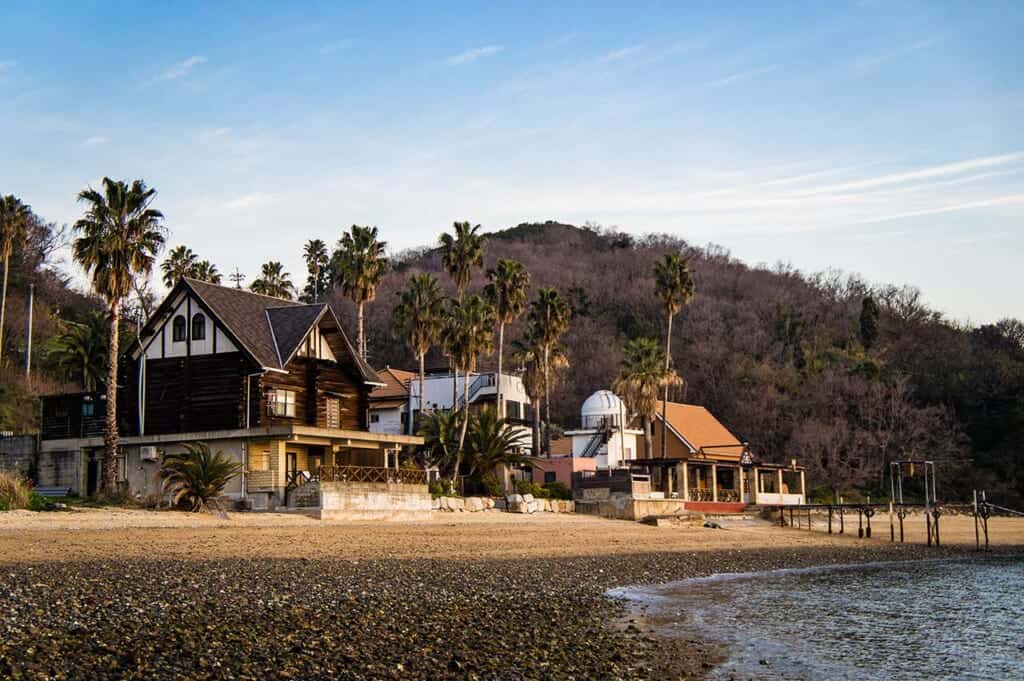
Rate: between 11,000 JPY and 21,000 JPY per person per night, including dinner and breakfast. More information is available on the Santora website (available in English).
Zenta Suite: An Private House at the Port
We stayed at Zenta Suite, a private house in the port area. The entire house can be reserved, so you benefit from your own private view of the ocean. Even though you don’t have access to the kitchen, the hosts offer a meal plan which includes dinner and breakfast.
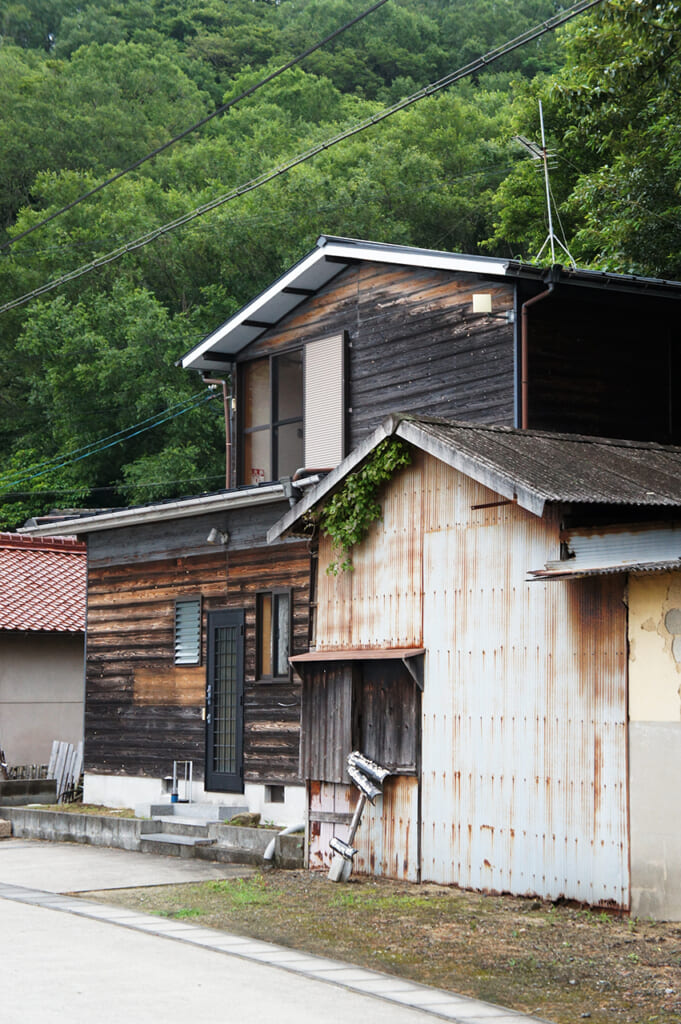
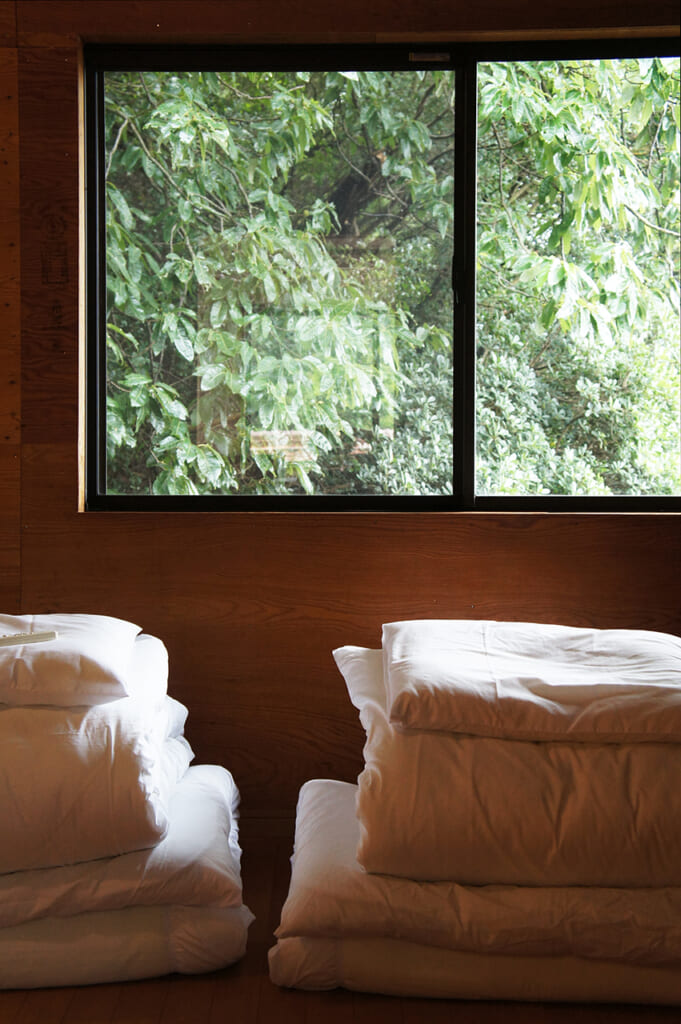
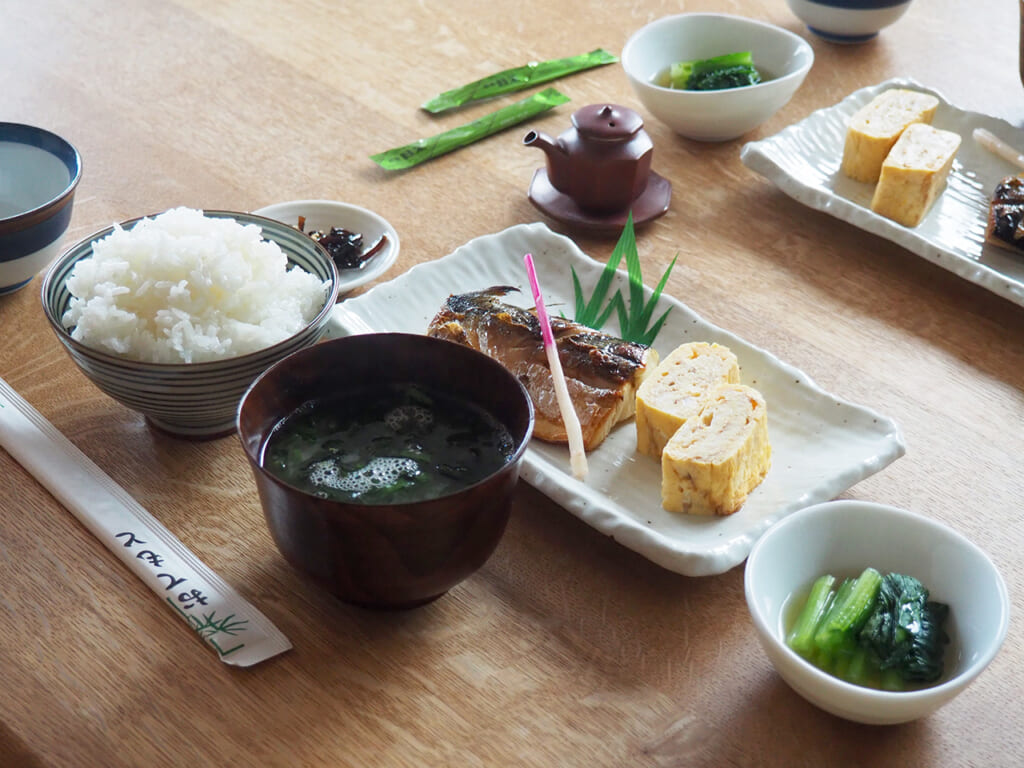
Rate: between 4,500 JPY and 5,300 JPY per person per night. Dinner and breakfast are an additional 3,000 JPY and 1,000 JPY per person. More information is available on the Manabeshima website (in Japanese).
Inn The Camp: A Hostel with a Camping Feel
The owners of Zenta Suite, Tamiko and Shinichiro, also manage Inn the Camp Hostel in the heart of Hon-ura. A serviced dormitory with a campsite feel is the best option if you are on a limited budget or have a particular passion for staying in this type of accommodation.
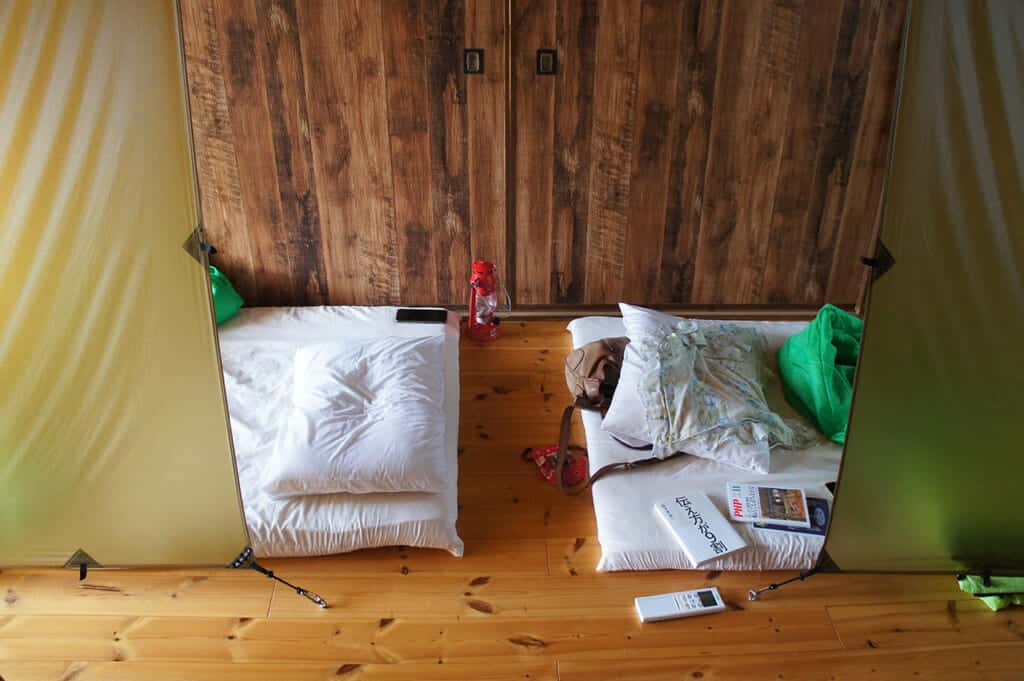
Rate: 3,500 JPY per person per night. Dinner is an additional 3,000 JPY per person. More information is available on the Manabeshima website (in Japanese).
Ryoka: An Inn Restaurant in Hon-ura
If you don’t manage to find anywhere to stay at any other of the places mentioned, a final option is to book a room at Ryoka (漁火), a no-frills inn situated in Hon-ura. This option will be ideal if you are travelling in a group or a family as you also have access to the kitchen.
Rate: 12,000 JPY for two people per night, 5,000 JPY for each additional person. Dinner is an additional 5,000 JPY per person but if you are eating on-site, the nightly rate is reduced to 10,000 JPY for two people per night and 4,000 JPY for each additional person.
Reservations can only be made by telephone on 0865-68-3519.
Where To Eat in Manabeshima
The simplest option is to stay the night at a place that includes dinner and breakfast. That will also give you the chance to taste some of the fresh local produce such as fish, shellfish and other types of seafood without having to worry about where to go.
The Seafood of Manabé: Funade and Ryoka
Funade (船出) mainly serves the day’s catch alongside other cooked dishes, udon and ramen. It sometimes opens in the evening, but you must book in advance and check that the number of customers justifies the restaurant opening.
Rate: allow between 1,500 JPY and 3,000 JPY for a fish dish.
The opening days vary and reservation is advised by calling 0865-68-3900.
Ryoka (漁火) is both a seafood restaurant and inn. It only opens by reservation and the menu starts from 5,000 JPY. Reservation can be made by telephone on 0865-68-3519.
Motoe Cafe: Curry and Cheesecake in a Modern Setting
For lunch, there is a bit more choice, notably Motoe Cafe (モトエカフェ), which only serves curry and cheesecake. It is situated in the same building as Inn the Camp hostel and is another creation from Tamiko and Shinichiro, who set about revitalising the island. The decor is modern, pleasant and, even though I did not try the curry, I would advise you to try their cheesecake as it’s one of the best that I’ve had!
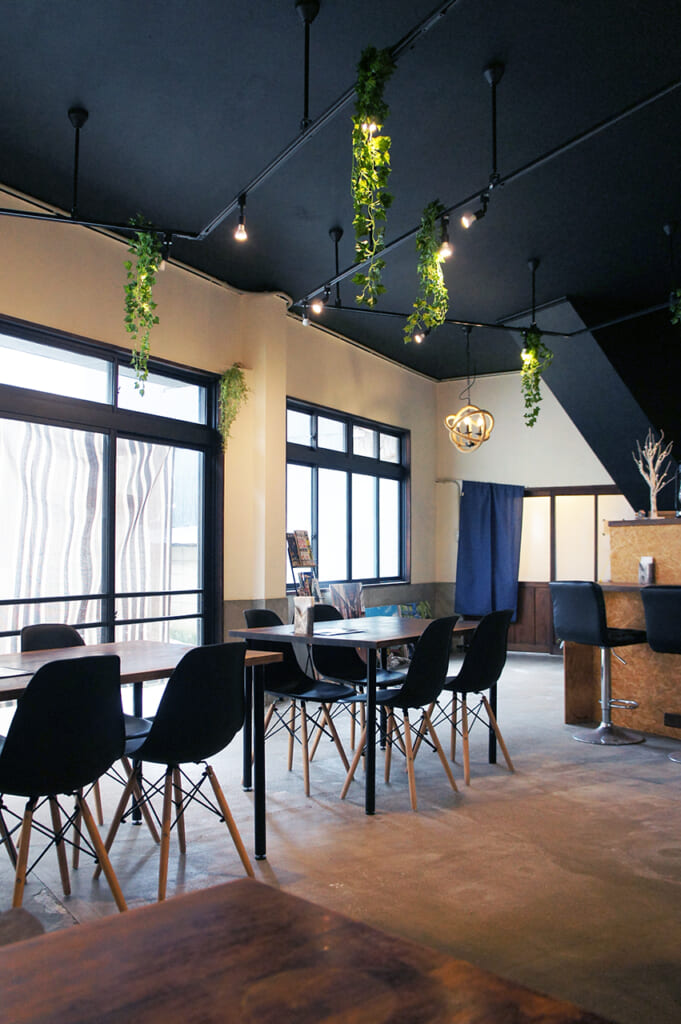
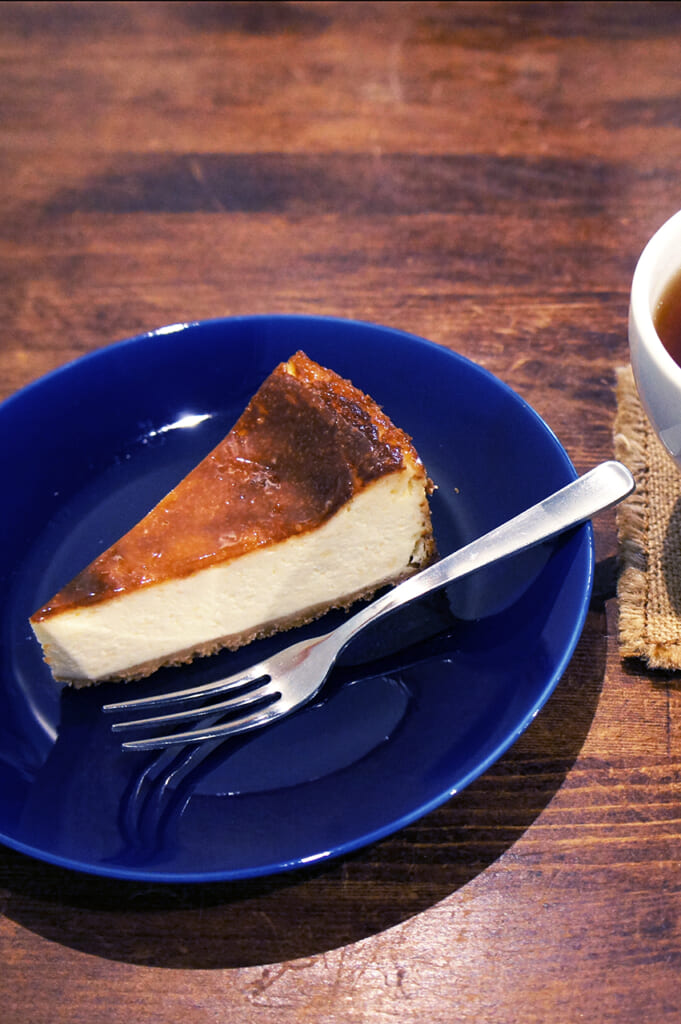
Rate: lunch menu – 1,080 JPY / cheesecake and hot drink – 580 JPY / coffee – 380 JPY. More information is available on the Manabeshima website (in Japanese).
Another cafe, オータニ (Otani), is located in Iwatsubo village but the opening hours vary and it was closed during our visit.
Limited Options, Especially for Vegetarians
If you are vegetarian or vegan, I would advise you to ensure that you have your own food with you in case you cannot find anything suitable as many dishes use seafood as a base.
Unexpected Meeting with a Local Resident
During our visit, we only booked bed and breakfast for one night so that we could have dinner in a restaurant in the evening. Even though it was a Saturday night in July, Funade restaurant would not open for just the two of us so we went in search of a grocery store and we managed to find one that sold cup noodles.
We did not realise it at the time, but this would turn out to be one of the most memorable moments of our trip to the island. The grocery store owner quickly understood the situation and was delighted to make new friends, so offered to cook us something. A little surprised but also pleased, we accepted his invitation and entered the kitchen attached to his shop. In between serving customers in the shop, the owner lit the oven and began preparing several impressive fish and shellfish dishes for us to try. There was octopus sashimi (raw octopus), crab, tiny fried fishes, simmered fish, to name just a few, and it turned out to be a true feast, coming entirely from the waters around Manabeshima!
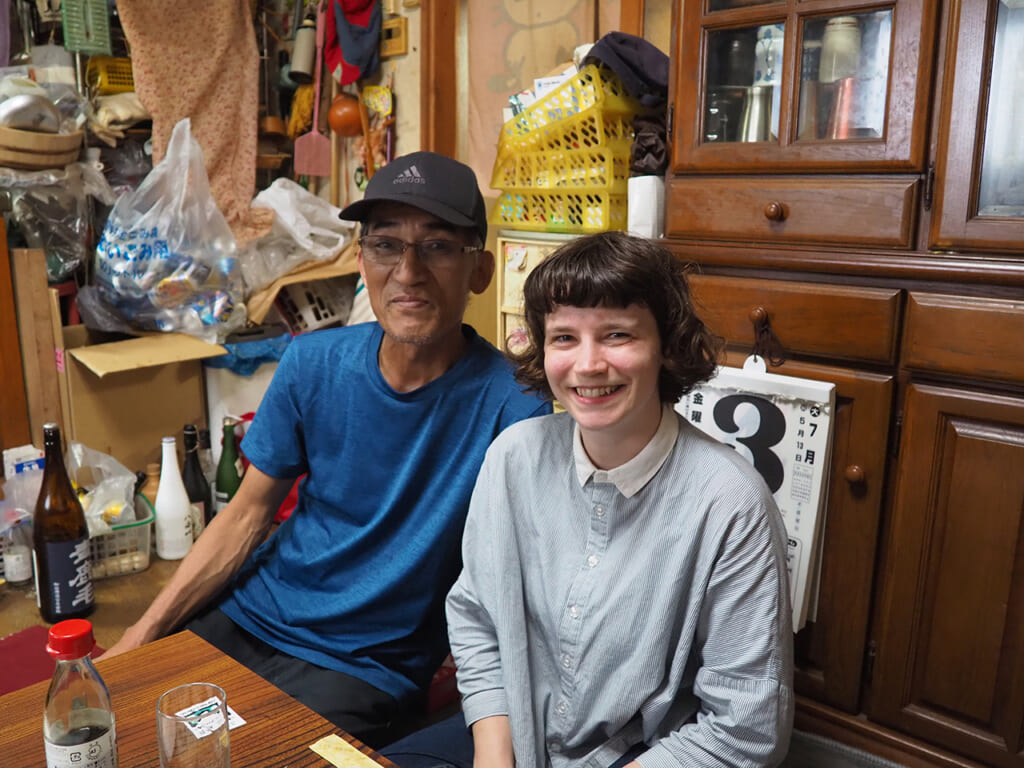
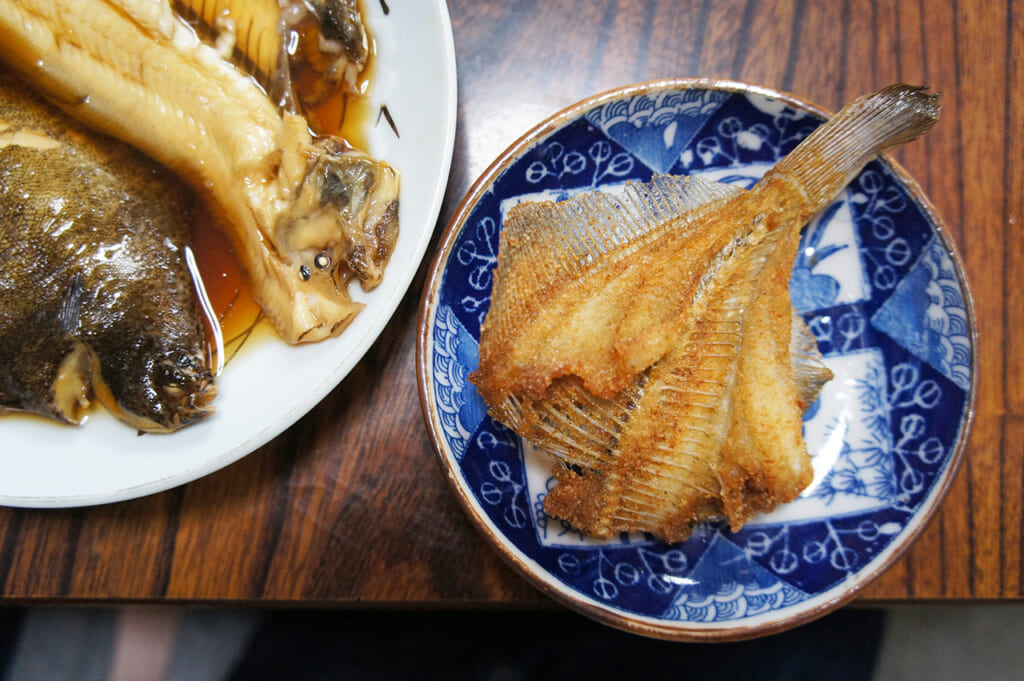
We discussed various things during our meal, such as the way of life and history of the island. Our host, native to Manabeshima, remembered a time when more than 1,000 people were living on the island and when the economy was based on chrysanthemums. Manabé used to be covered in fields of flowers which shone during the night. Since then, the fields have disappeared and been replaced by lush vegetation, gradually taking over the island and forcing the inhabitants to look for work elsewhere.
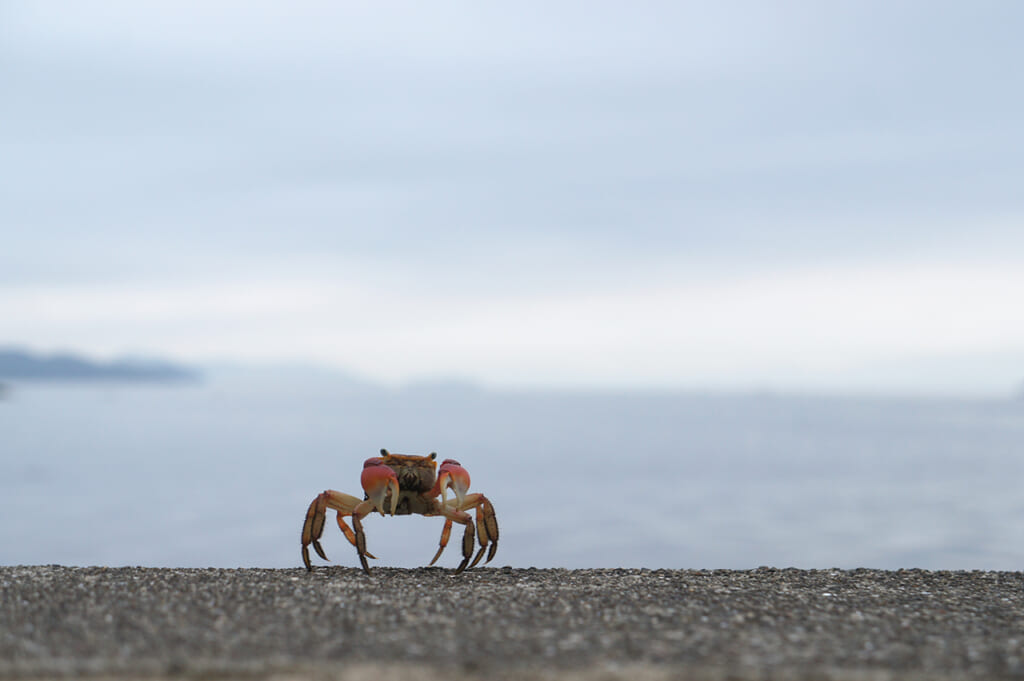
Despite the arrival of some who come looking for a new life, today the island’s population is little more than 200 people. Many make a living from tending to private gardens or fishing. The cats and the abandoned houses are a favourite of visitors and photographers alike. But for the island’s long term residents, the demographic and economic decline is heartbreaking.
How to Get to Manabeshima
It is interesting to combine a visit to Manabeshima with any trip to the Setouchi region. You can visit other islands of Kasaoka, discover Kurashiki (倉敷), Okayama (岡山), Tomonoura (鞆の浦), Onomichi (尾道) and of course Hiroshima (広島) and Miyajima (宮島). If you haven’t got the time to explore the region, you can also make a one-night excursion or even a day trip from the cities of Osaka and Kyoto.
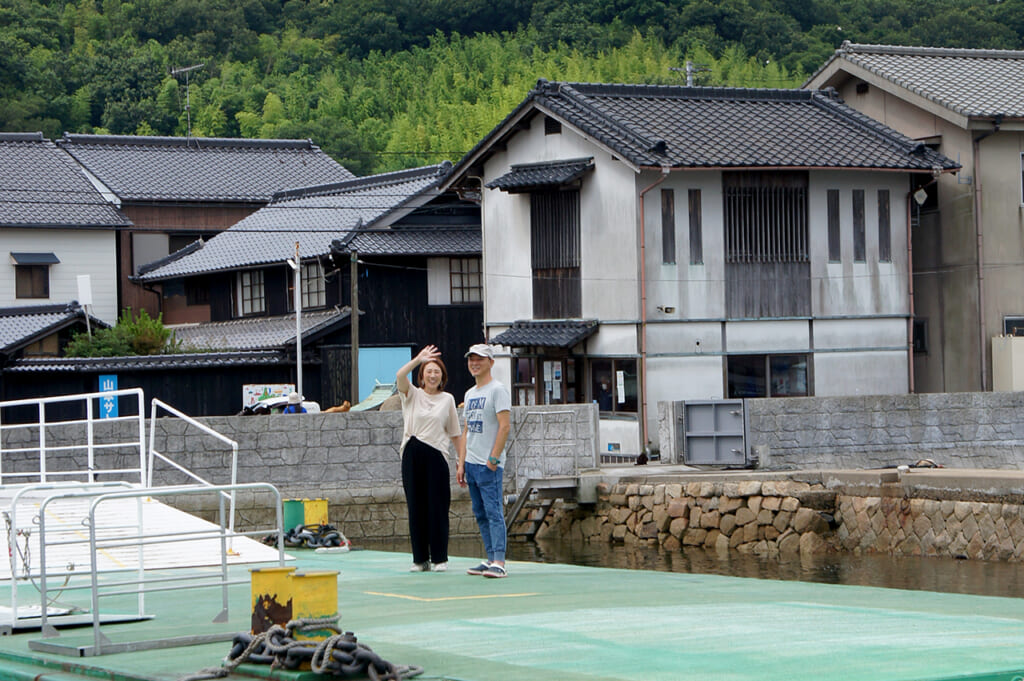
From the port of Kasaoka (笠岡港), there are 8 return crossings a day to Manabeshima which also stop at the islands of Takashima (高島), Shiraishijima (白石島) and Kitagishima (北木島).
It would be best to allow 1 hour 15 minutes and 1,040 JPY for the normal crossing and 45 minutes and 1,790 JPY for the express service. Information, timetables and tariffs are available on the Kasaoka Tourist Office website.
Kasaoka is on the JR train lines and you should allow 40 minutes to get there from the Shinkansen station in Okayama. The high speed “bullet” train from Tokyo (東京駅) to Okayama takes 3 hours and 30 minutes and 50 minutes from Shin-Osaka station (新大阪駅). There is more information on the Kasaoka tourist office website (in English).
Come to Manabeshima to have something to eat or drink a coffee, as it is the best way to support the local economy. While small communities can sometimes be harmed by over-tourism, the cat island of Manabeshima remains a less-traveled destination where visitors are warmly welcomed by local felines and humans alike.
Translated by Mark Webster

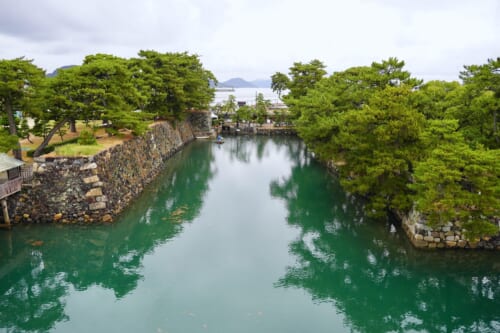
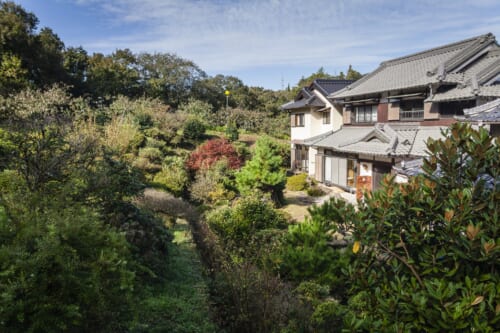










No Comments yet!